Orange-colored foods don’t just make your plate brighter; they brighten up your health with important nutrients! When you eat more orange foods and snacks from nature, you’re giving your body a boost of essential nutrients.
This list of foods that are orange should help you create that rainbow on your plate. Included are orange fruits, vegetables that are orange, edible orange flowers, and an orange legume!
This post may contain affiliate links.
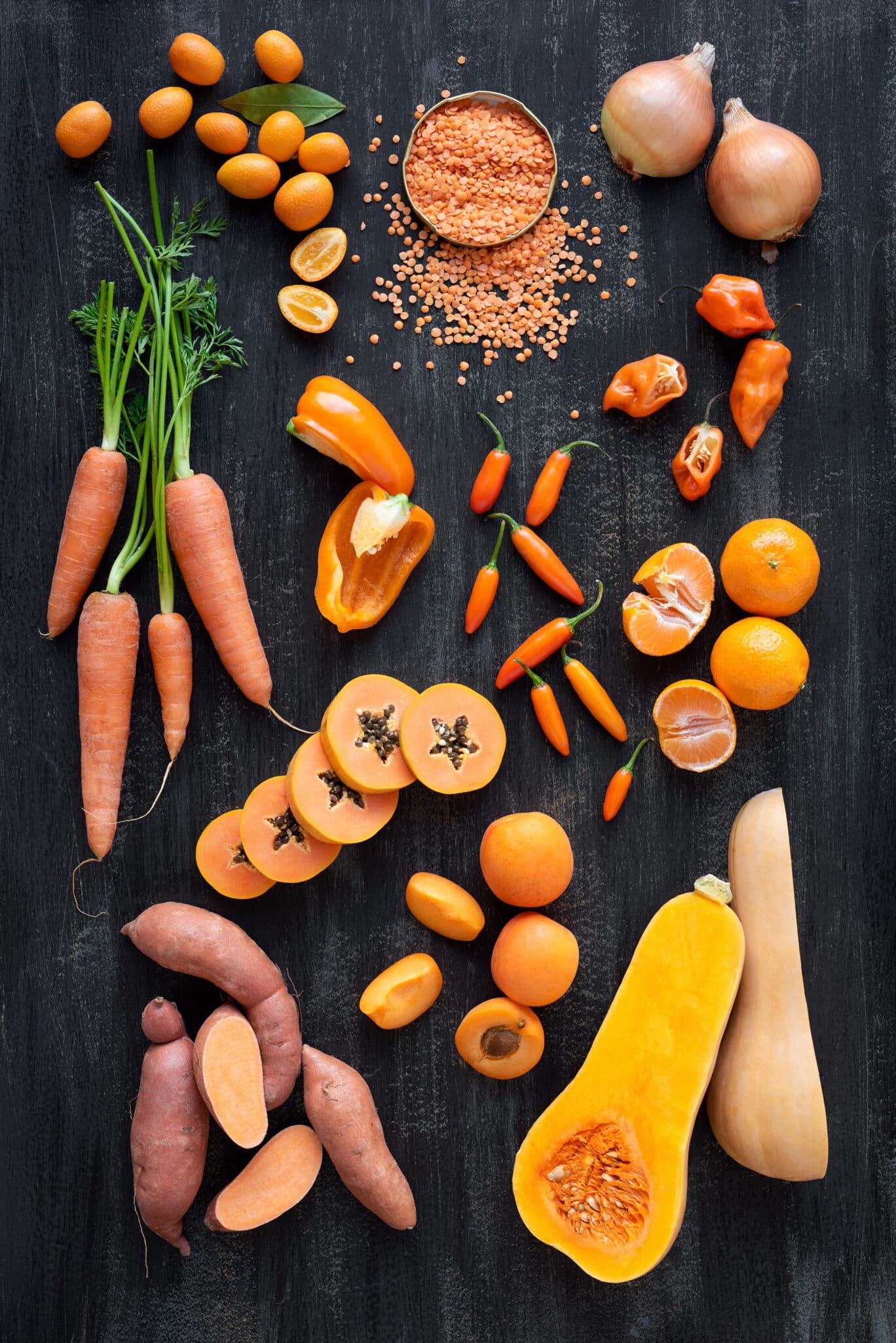
What makes food orange?
Phytonutrients are compounds in food that provide their unique taste, scent, and color. But that’s not all they do. The natural orange pigments in food are from the phytonutrient carotenoids, specifically beta-carotene. Your body uses it to create vitamin A, which plays an important role in your eye and skin health.
Orange-colored food also contains the phytonutrient xanthophylls. These have antioxidant properties that can help protect your cells from those damaging free radicals (which can cause oxidative stress). Eeek! Let’s try to prevent that, shall we?
Is orange food healthy?
Orange-colored food is very healthy! It may help you burn more belly fat, aid your eyesight, kill cancer cells, and support your immunity. When you eat orange foods, you’re giving your body some of the most important phytonutrients it needs to thrive and improve health.
What are orange foods high in?
Orange foods are high in various vitamins and minerals that your gorgeous body thrives on. As mentioned above, they also contain carotenoids like beta carotene and xanthophylls.
What do orange foods help with?
Orange foods and snacks can boost your immune system with their diverse nutrients. They also benefit eyesight since beta carotene converts to vitamin A for healthy eye function.
The antioxidants help fight free radicals to give you more protection against certain chronic diseases. Plus, studies show that orange-colored foods can even help you with your weight loss efforts.
Why am I craving orange foods?
Craving oranges themselves may be your body’s way of saying you need more vitamin C. But it could also signal a need for those other nutrients like beta carotene and xanthophylls that your body is looking for. To be on the safe side, try your best to eat the rainbow, including natural orange foods.
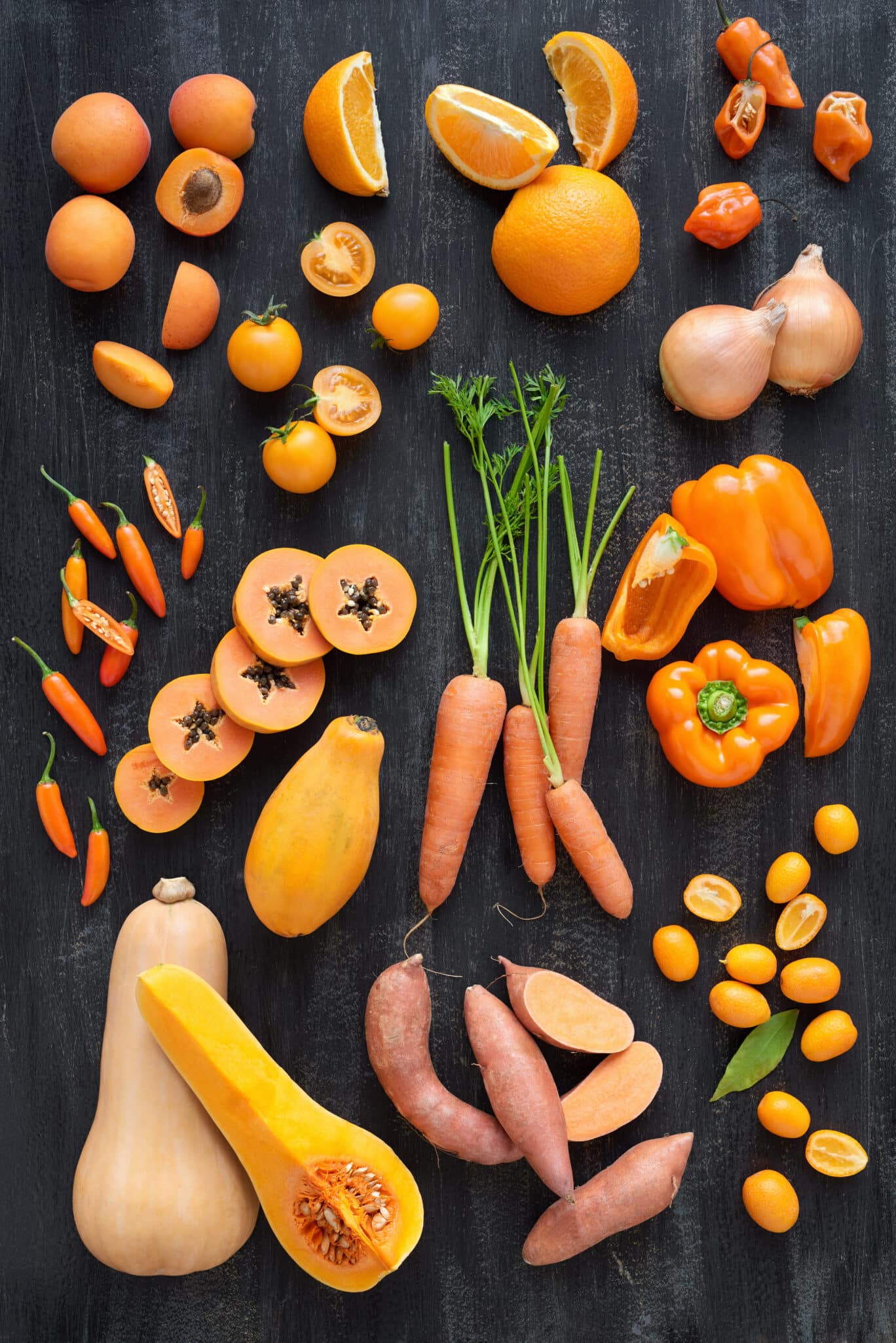
The List: 52 Foods That Are Orange
What vegetables are orange?
There are at least three vegetables that are orange that you should be integrating into your diet. These orange vegetables include carrots, cauliflower, and sweet potatoes. Do you have a favorite vegetable that is orange? I’d love to know in the comments below!
1. Chantenay Red Core Carrots
You probably think of carrots right away when you think of orange foods and snacks. These carrots are the traditional orange color on the outside but vibrant red on the inside.
They are loaded with the powerful antioxidant beta-carotene and contain various vitamins and minerals, including biotin, vitamin K1, B6, and potassium.
Speaking of carrots, carrot juice is orange and healthy too! If you need a healthy carrot recipe? This Carrot Ginger Soup is creamy, flavorful, and tasty as heck!
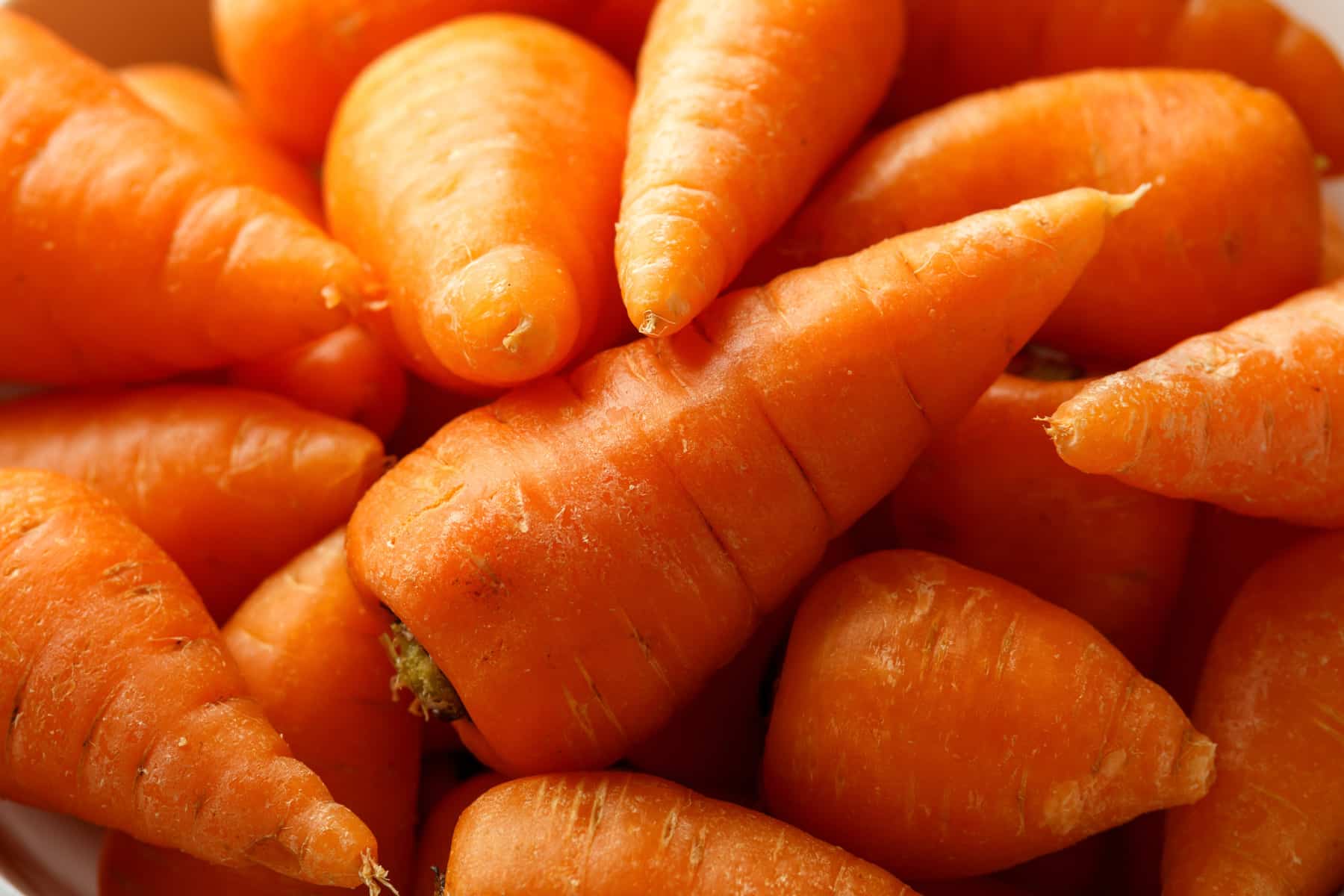
2. Koral Carrot
This orange carrot is an heirloom variety from Europe. It is the traditional vibrant orange color inside and out.
Carrots are a wonderfully versatile veggie. Enjoy them raw or cooked alike. These carrots in particular are wonderful added to smoothies or even juiced.
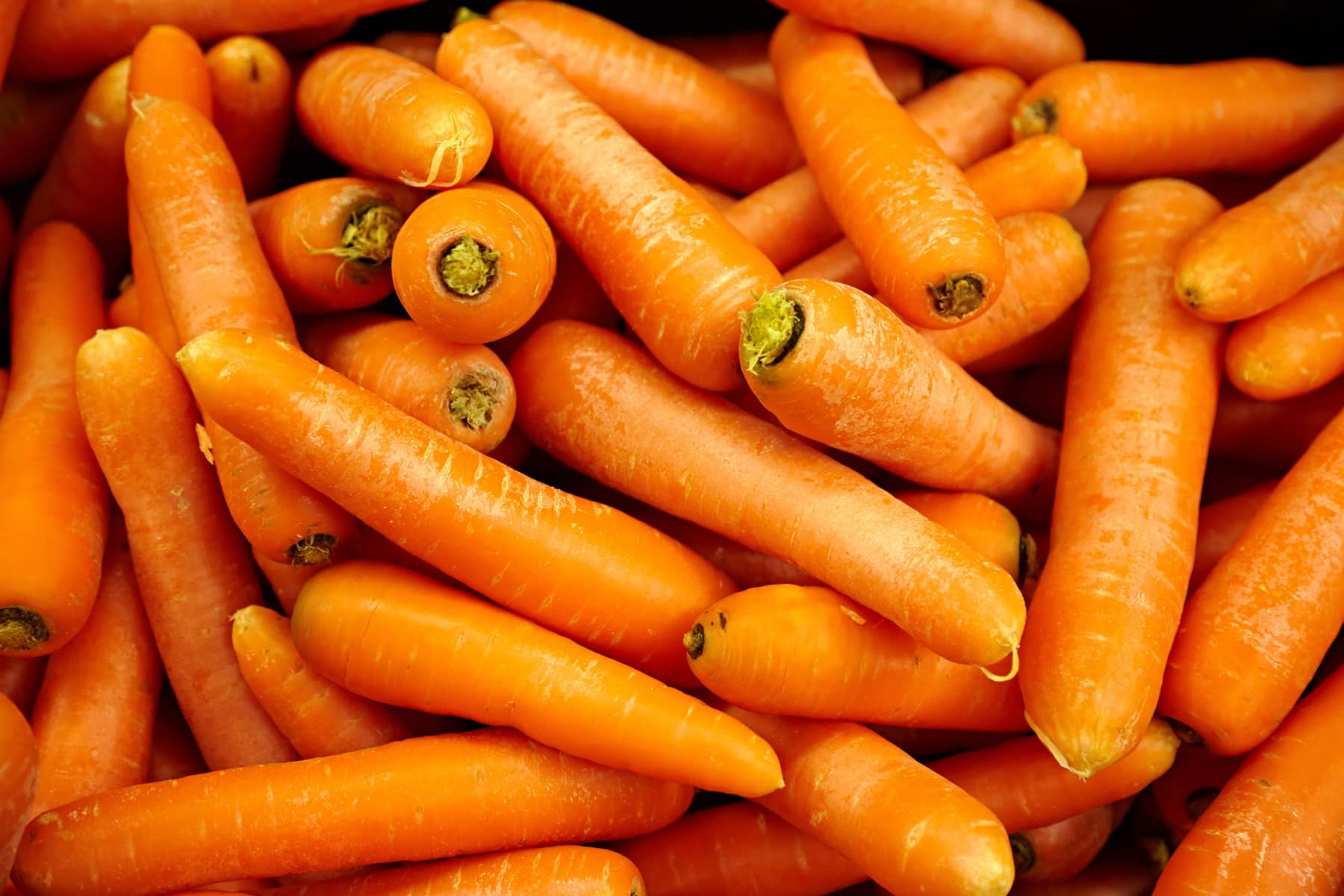
3. Orange Cauliflower
Cauliflower is part of the cruciferous vegetable family. It’s got the same texture and taste as the more widely eaten white cauliflower. The difference is in the color and the content of carotenoids compared to white or purple varieties.
(Did you know that you can eat the leafy greens of the cauliflower plant?) Orange cauliflower is an excellent source of vitamin C.
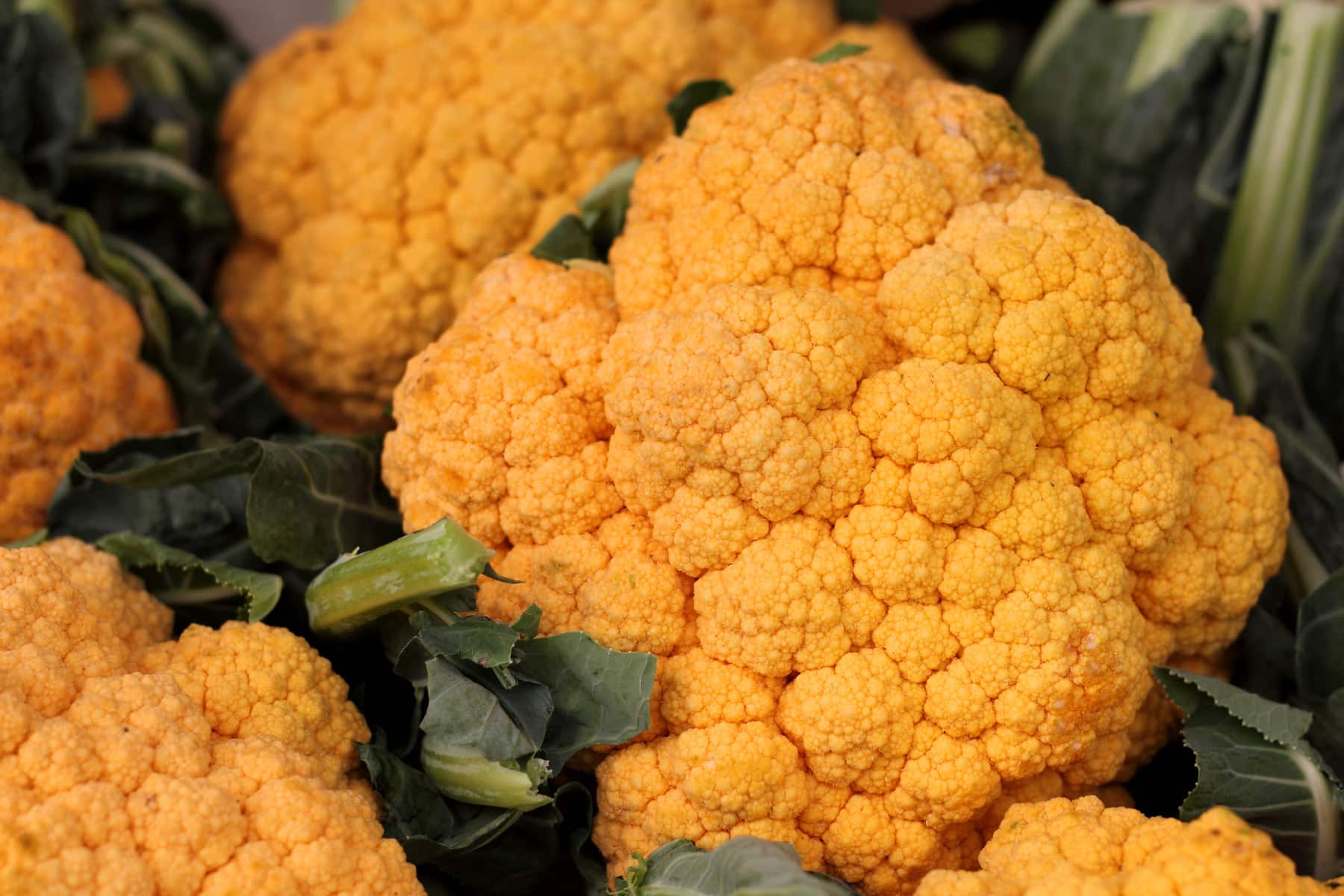
4. Oriale Orange Swiss Chard
This is an orange-colored swiss chard. The early leaves are wonderful eaten raw in salads or on sandwiches. When the plant matures the stalk and leaves are best cooked in stir-fries and soups.
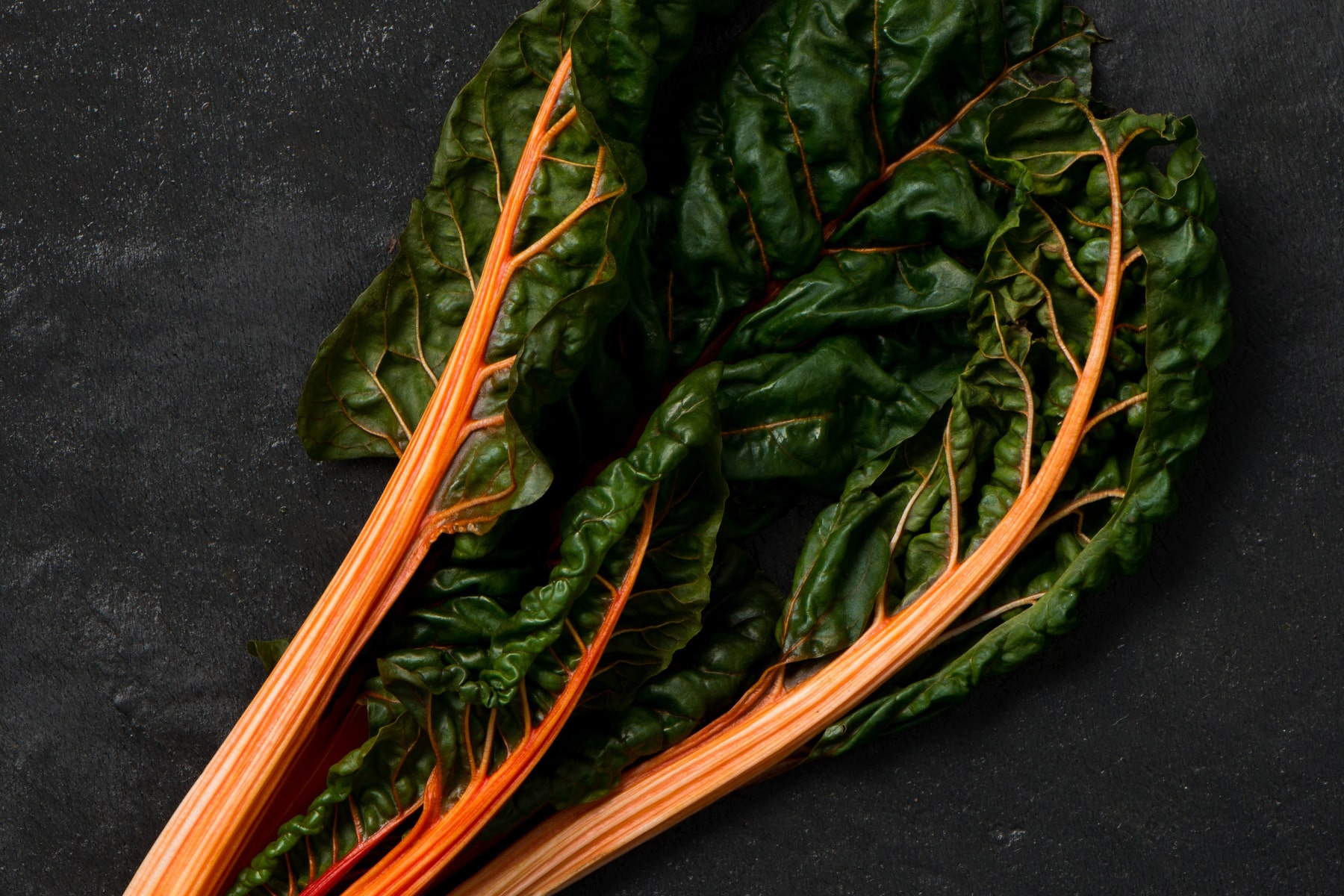
5. Parissienne Carrot
These carrots are similar in look and shape to radishes. That being said, they are a beautiful vibrant orange. They are frost-hardy and thrive in most soils.
Eat them raw or cooked and enjoy their plentiful nutritional benefits. They may be able to help with weight loss and lowering cholesterol too!
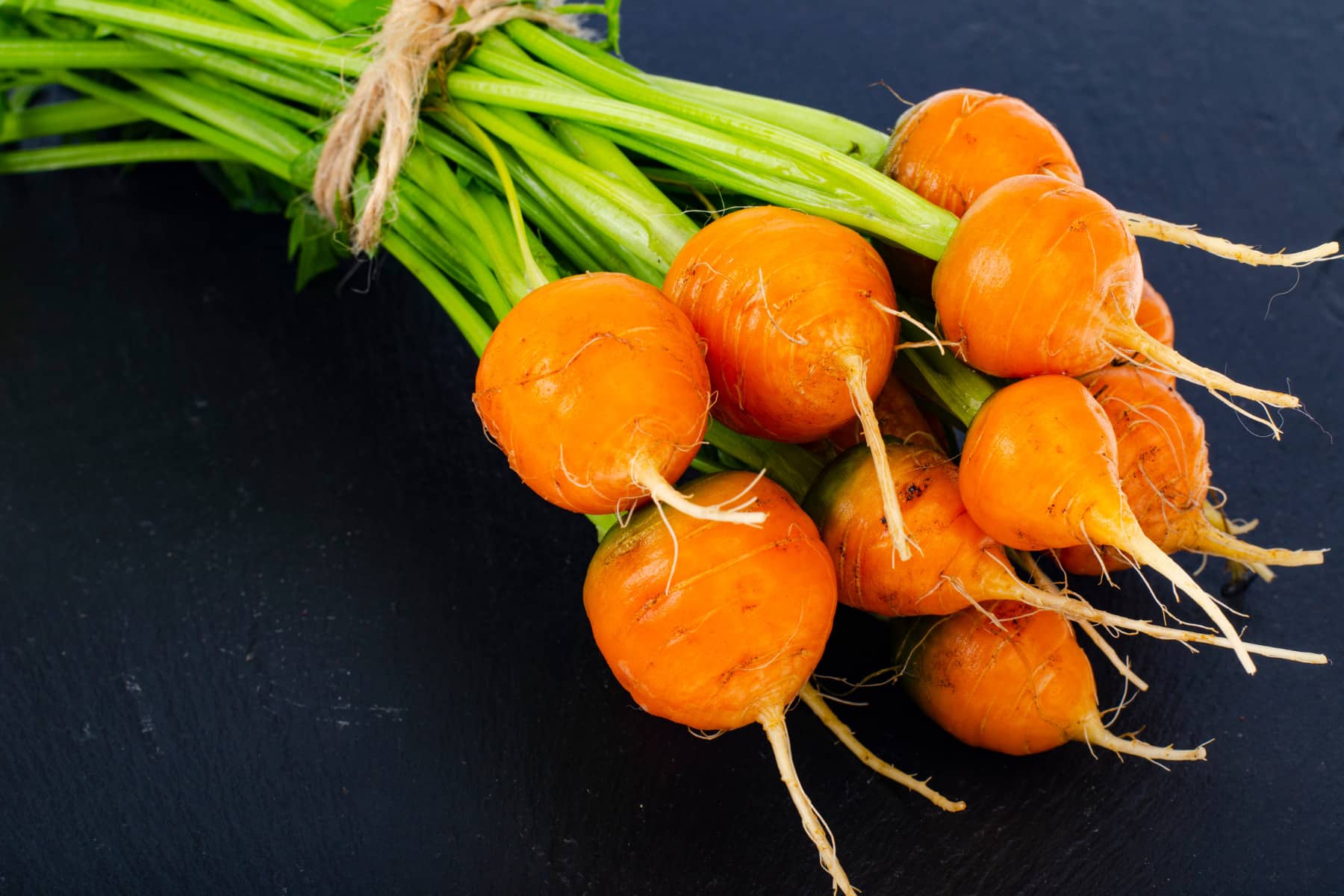
6. Sweet Potatoes
Did you know that sweet potato is the oldest vegetable on record to date? Out of all the orange-colored foods and snacks, they’re also one of the most popular. They’re a staple in cuisine around the world, and they’re incredibly good for you too. Naturally delicious all on their own, it’s easy to eat your fill.
Sweet potatoes are a good source of fiber and vitamin B6. They have been shown to stabilize blood pressure, improve insulin sensitivity, boost immunity, and lower the risk for certain diseases.
There are many easy ways to enjoy sweet potatoes, but these oven-baked sweet potato fries are one of my favorites. They are the perfect combination of sweet and savory.
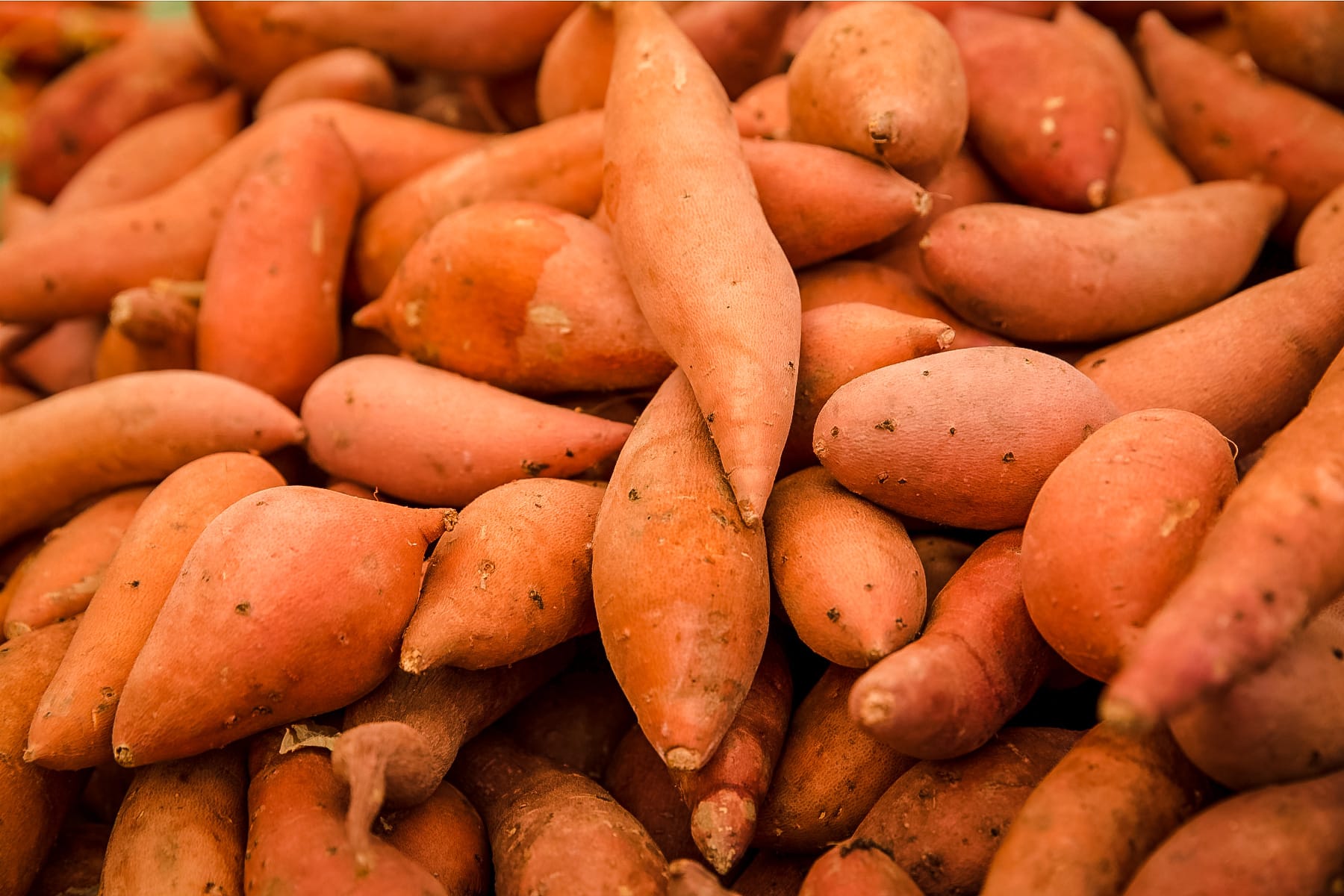
What fruits are orange?
Orange fruits are a great way to get sweetness and refreshment into your day without added sugar. Bright orange fruit is packed with phytonutrients and powerful antioxidants. This list of orange color fruits is sure to give you new and old delights to fill up your plate with a variety of foods and snacks!
Now, you might not think of all these plant-based foods as being “fruits”. However, technically speaking, a fruit is grown from the flower of a plant.
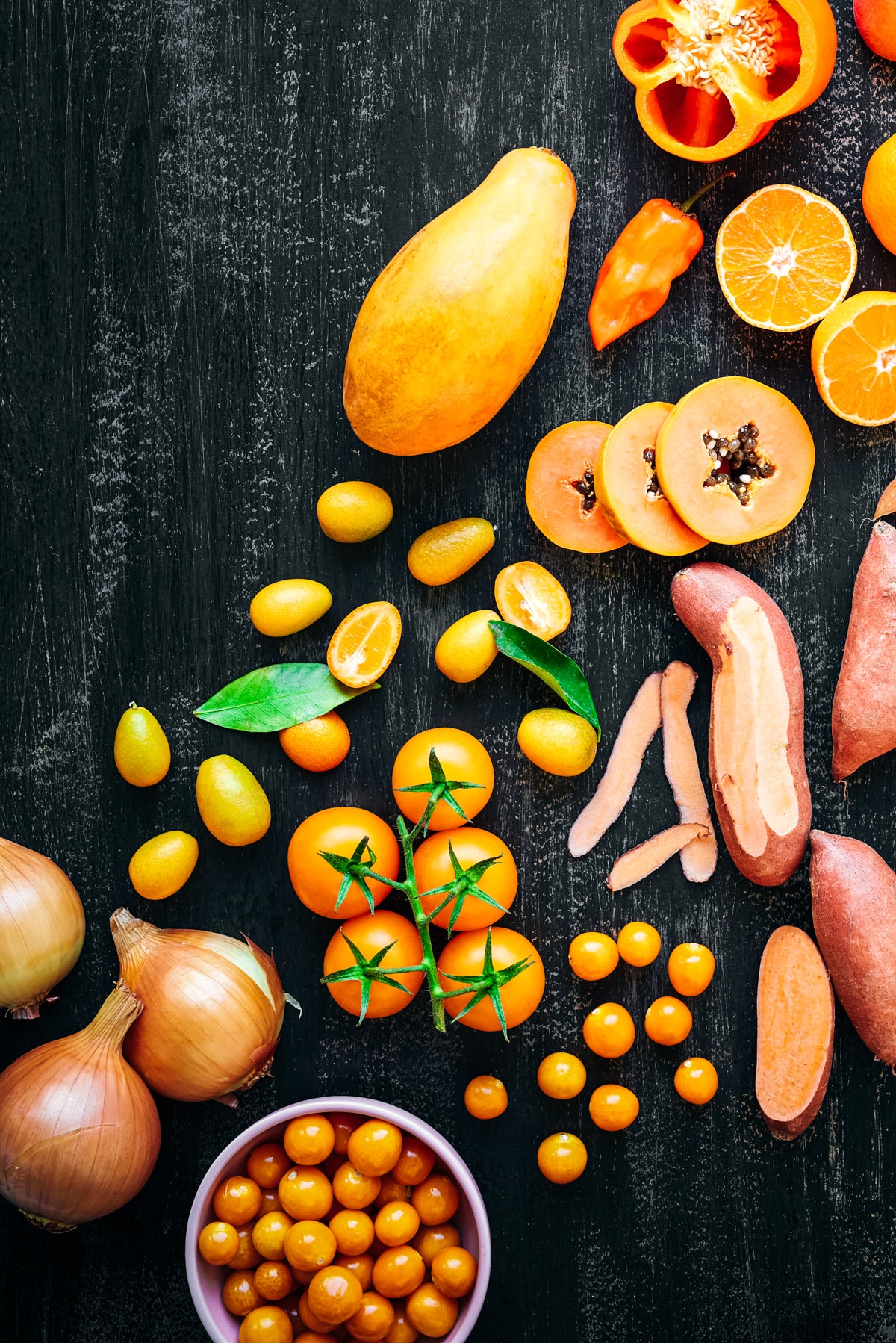
7. Apricots
Absolutely delicious. Apricots are stone fruits that you’re sure to enjoy. This orange fruit is related to peaches and nectarines but doesn’t taste like either. Originally from China and Central Asia, they are grown worldwide now, including in California. Apricots contain antioxidants, vitamins A, C, E, and potassium.
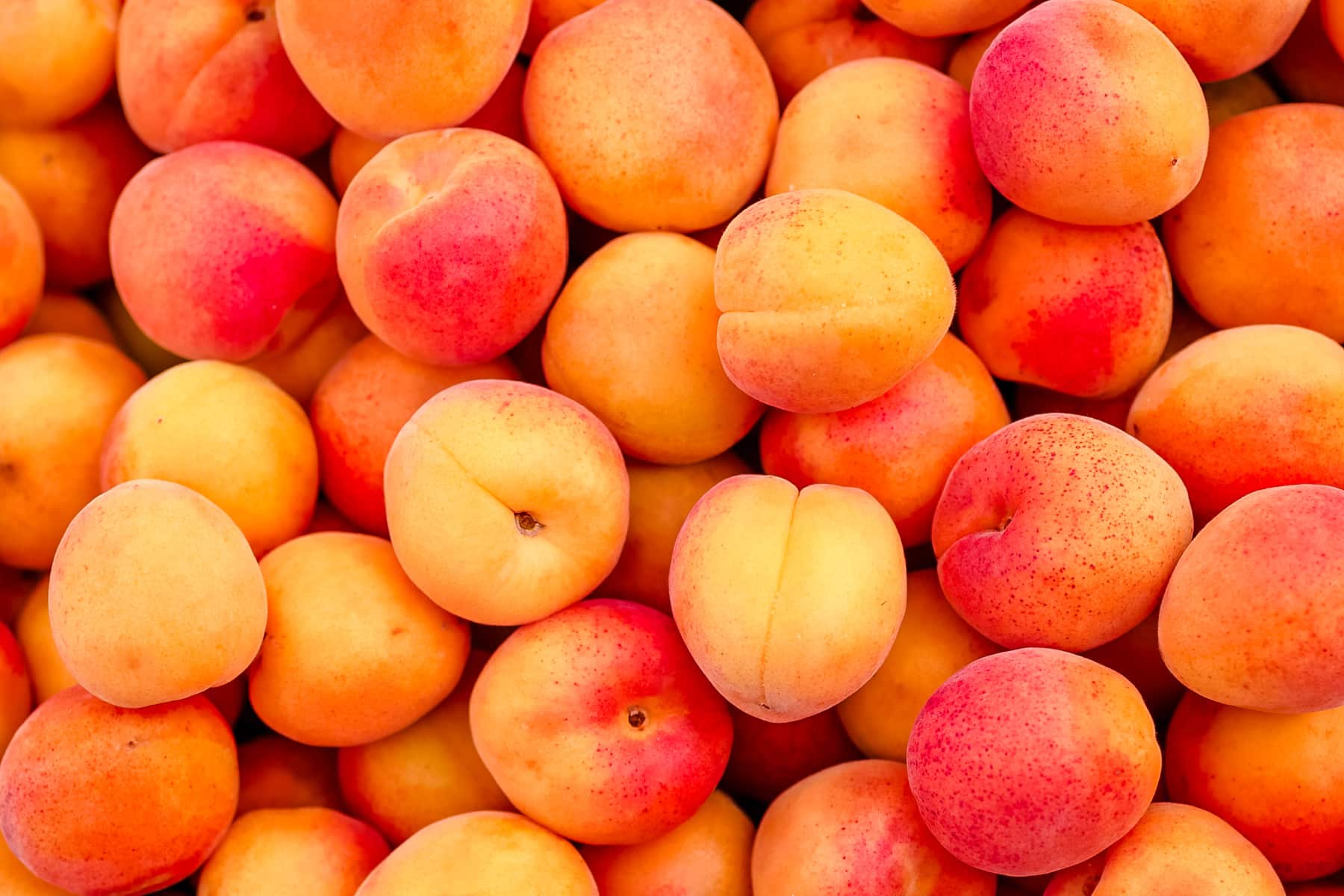
8. Butternut Squash
In the Land Down Under, they call this the butternut pumpkin. And they’re not wrong since this orange color food is part of the pumpkin family. It’s sweet and nutty in taste, so you won’t mind eating it one bit.
Butternut squash is an excellent source of vitamin A (457% of the Reference Daily Intake (RDI)) and vitamin C at 52% RDI. In addition, it is a good source of vitamins E, B1, B3, B6, and B9. Finally, butternut squash also contains a good amount of magnesium, potassium, and manganese. Can you say nutritional powerhouse?
If you’re looking for a tasty butternut squash recipe, I highly recommend trying out this Butternut Squash Coconut Milk Soup! It’s one of my favorites!
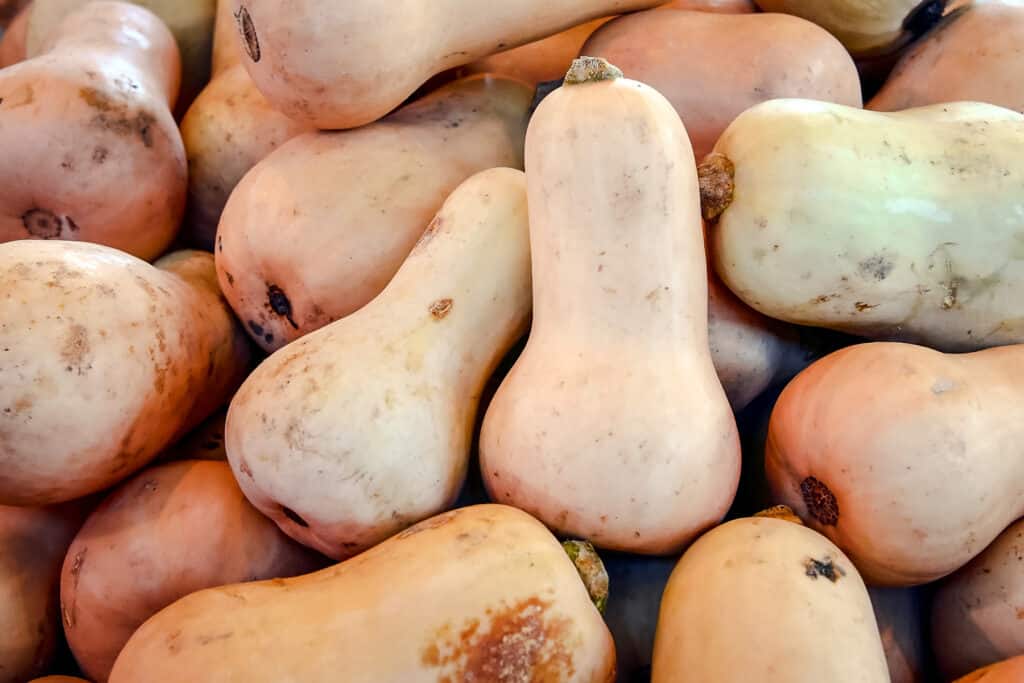
9. Cantaloupe
Refreshing and sweet, summer days only get better with slices of juicy cantaloupe on your plate. This orange color food is an excellent source of fiber and vitamins C, B6, and potassium. It is also a good source of magnesium.
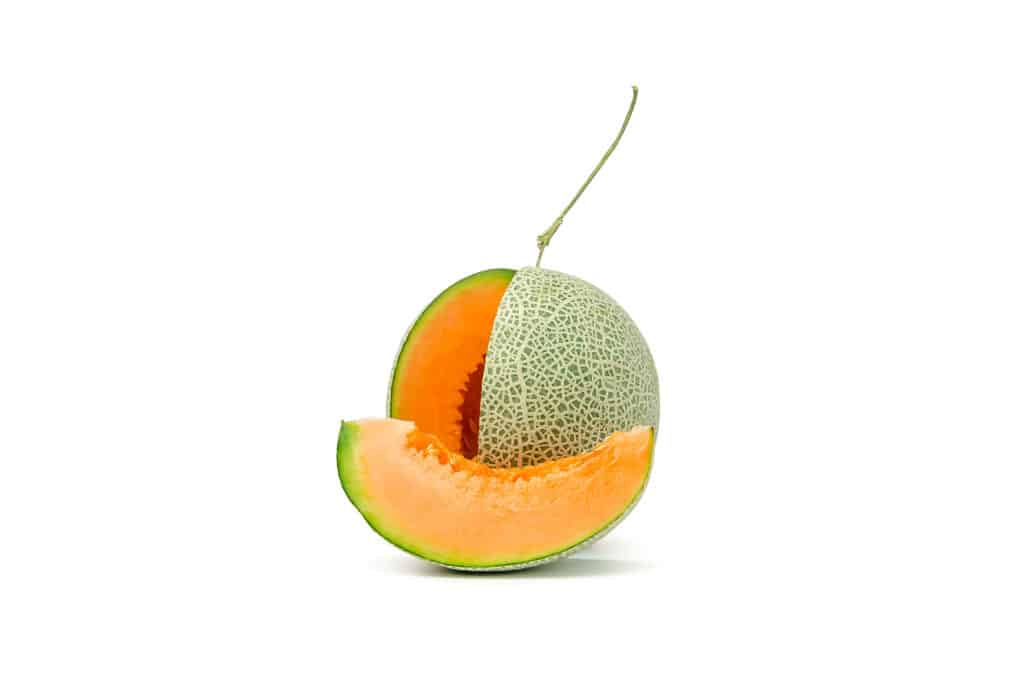
10. Clementine
Clementines are divine. They are a cross between a mandarin orange and another variety of sweet orange. It is an excellent source of vitamin C. A clementine makes the perfect on-the-go snack.
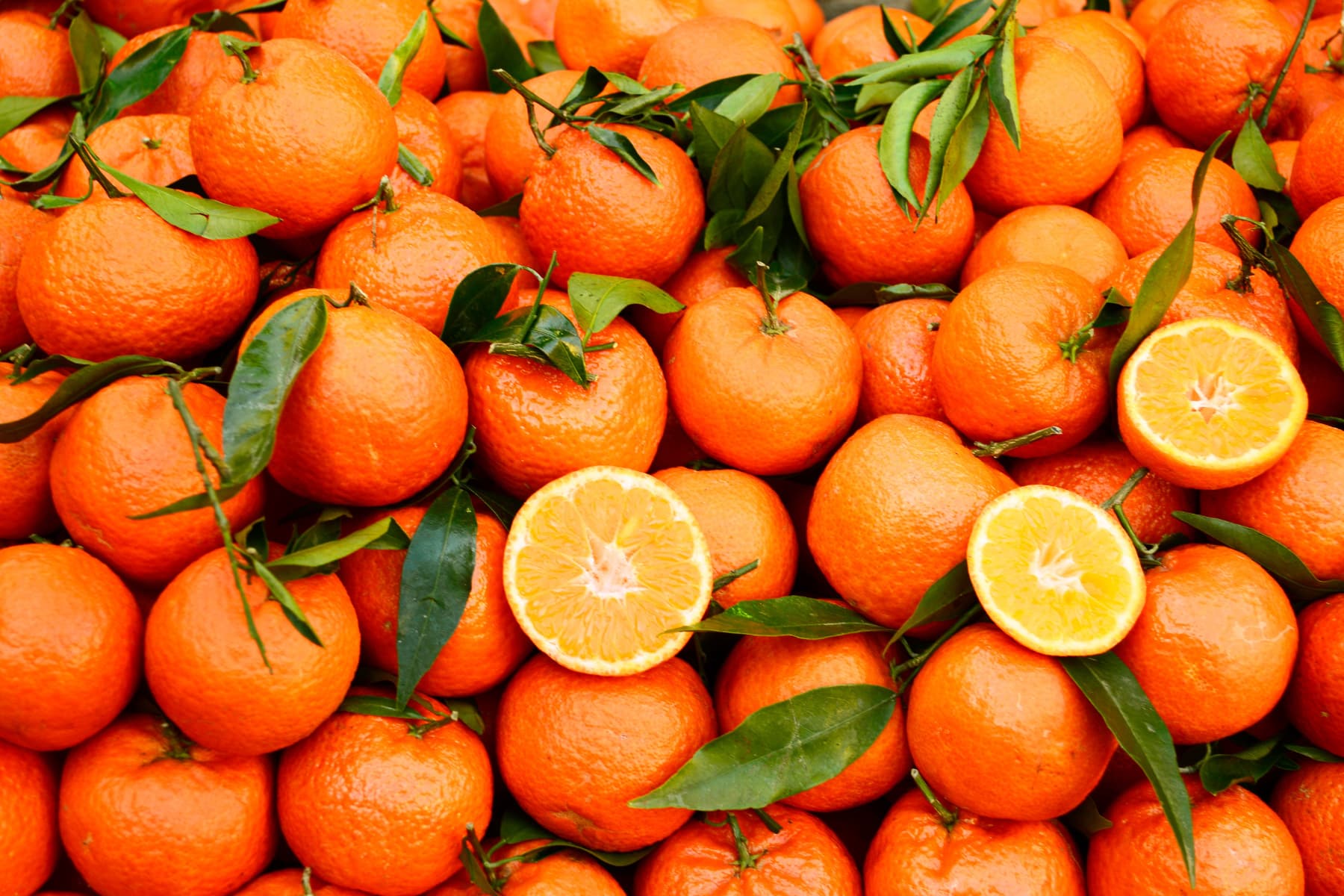
11. Dalandan
In the US, dalandan isn’t all that well-known. However, you may find it in Asian markets since it is originally from Southeast Asia. These orange fruits sometimes go by the names ‘bitter oranges’ or ‘sour oranges.’
The outside is green and looks similar to a lime, but the inside is bright orange. They use it to make orange juice, and it is found in a savory fruit salad with a salty and spicy taste. Dalandan is an excellent source of vitamin C and a good source of vitamin B6, riboflavin, and folate.
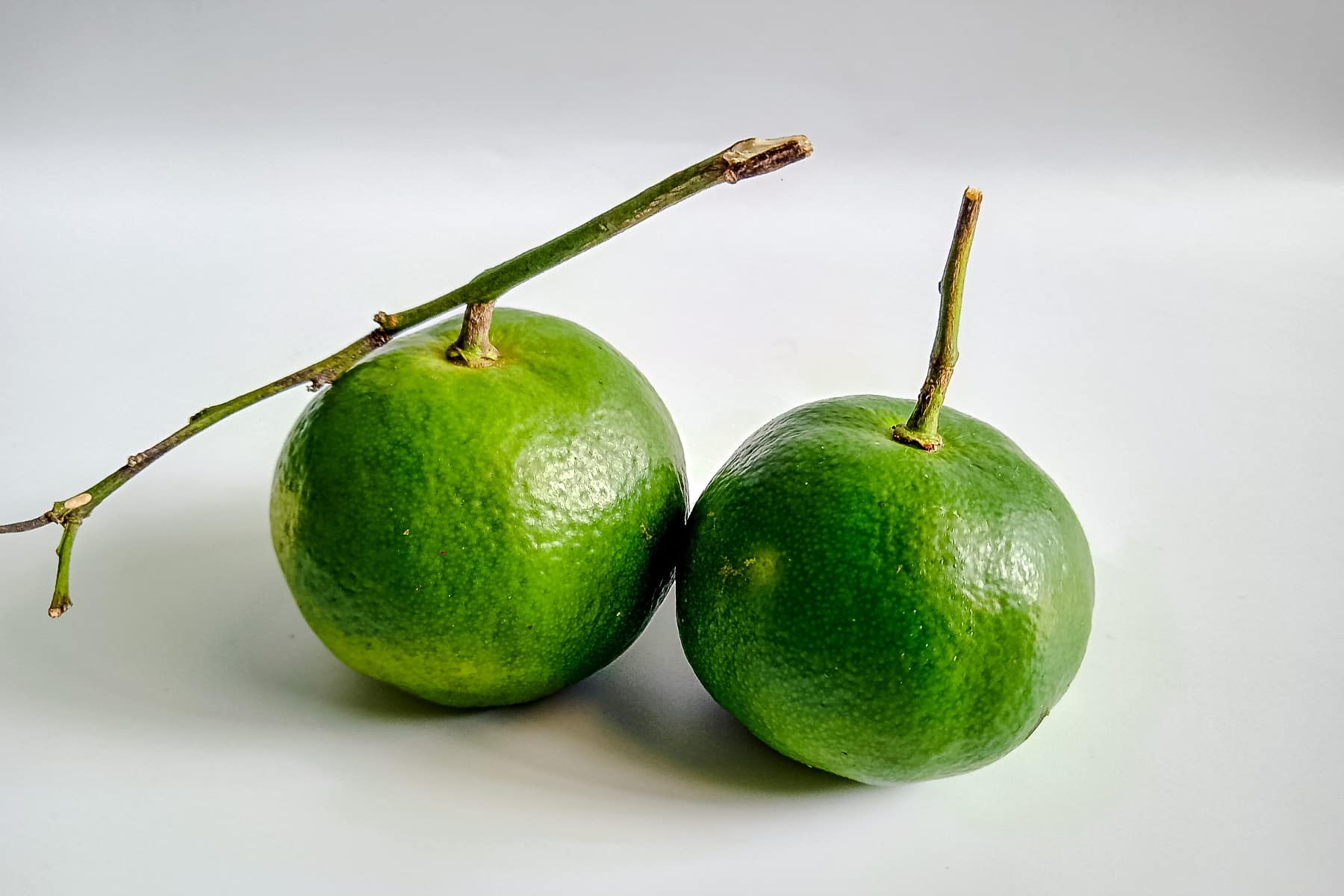
12. Gac
From Southeast Asia, this melon features an unfriendly-looking spiny casing. But that casing opens up when the fruit is ripe and ready. It’s related to durian but has a milder taste. It also adds a beautiful hue to sticky rice and other foods. There’s no surprise that this vibrant color fruit is loaded with vitamin C.
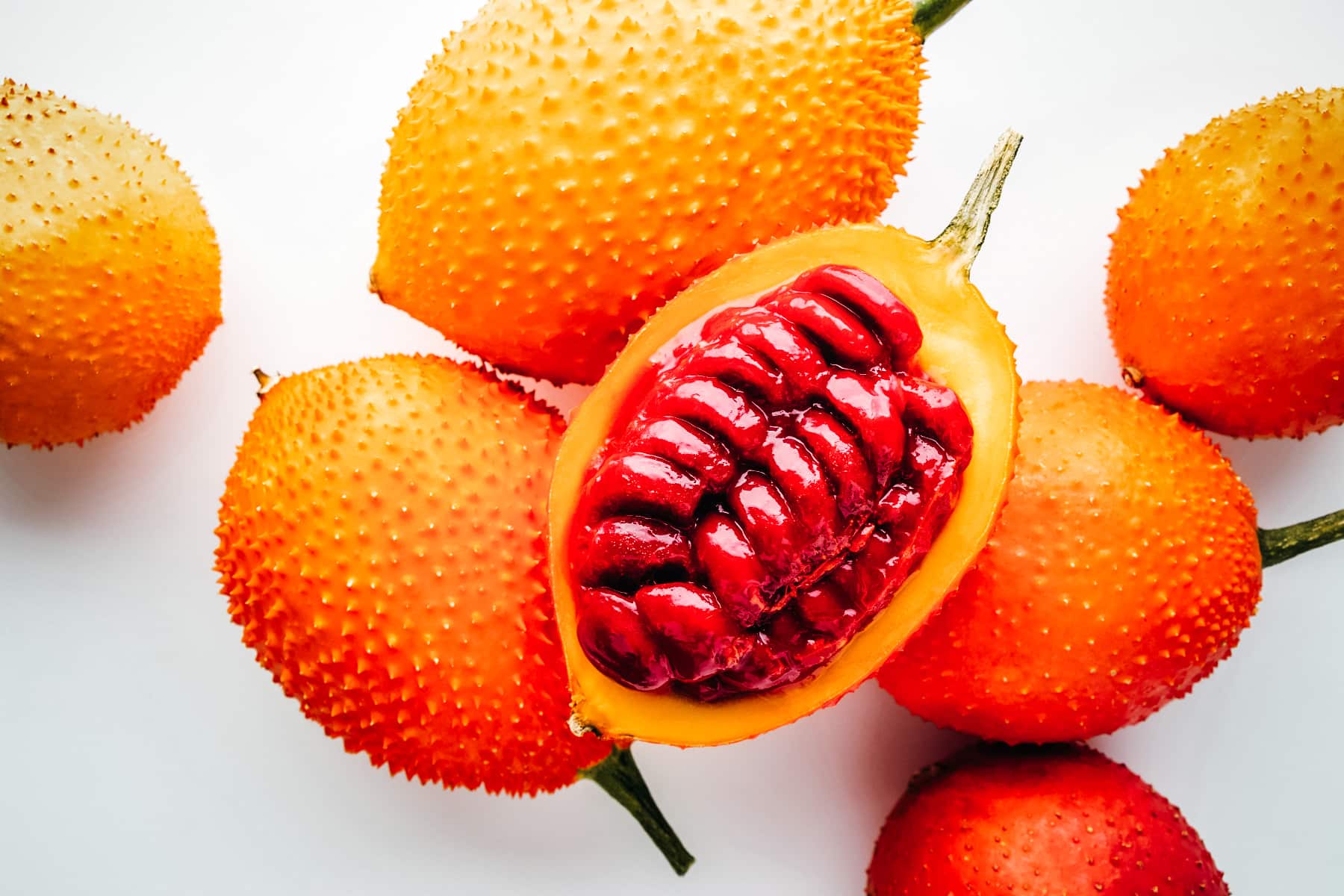
13. Jing Orange Okra
I will admit this okra is more reddish than orange, but it is a red-orange, and it has “orange” in its name! Okra is an excellent source of vitamin C and a good source of fiber, magnesium, and vitamin B6.
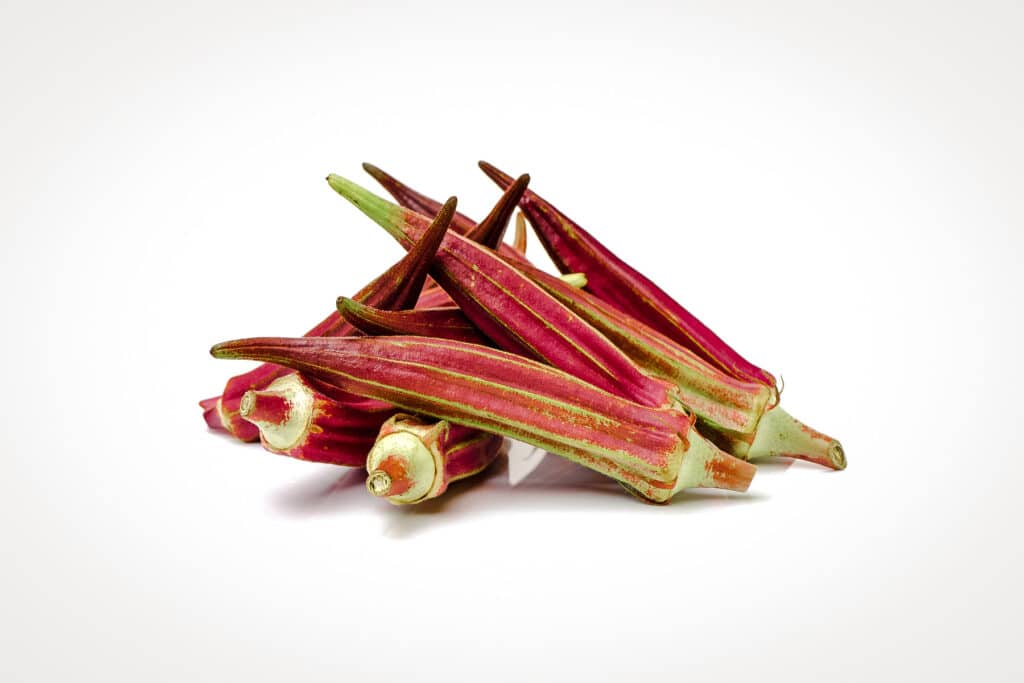
14. Kabocha Squash
Kabocha squash is a Japanese variety of Cucurbita maxima. Some call it the Japanese pumpkin. It’s a type of winter squash with immune-boosting nutrients that can help tame inflammation and prevent diabetes and cancer. Oh, and it’s great for heart health too. You’ll get vitamins A, B, and C out of it, plus potassium, magnesium, antioxidants, and of course, fiber. It’s green outside but cut through the rind, and you’ll discover its flesh is the color orange.
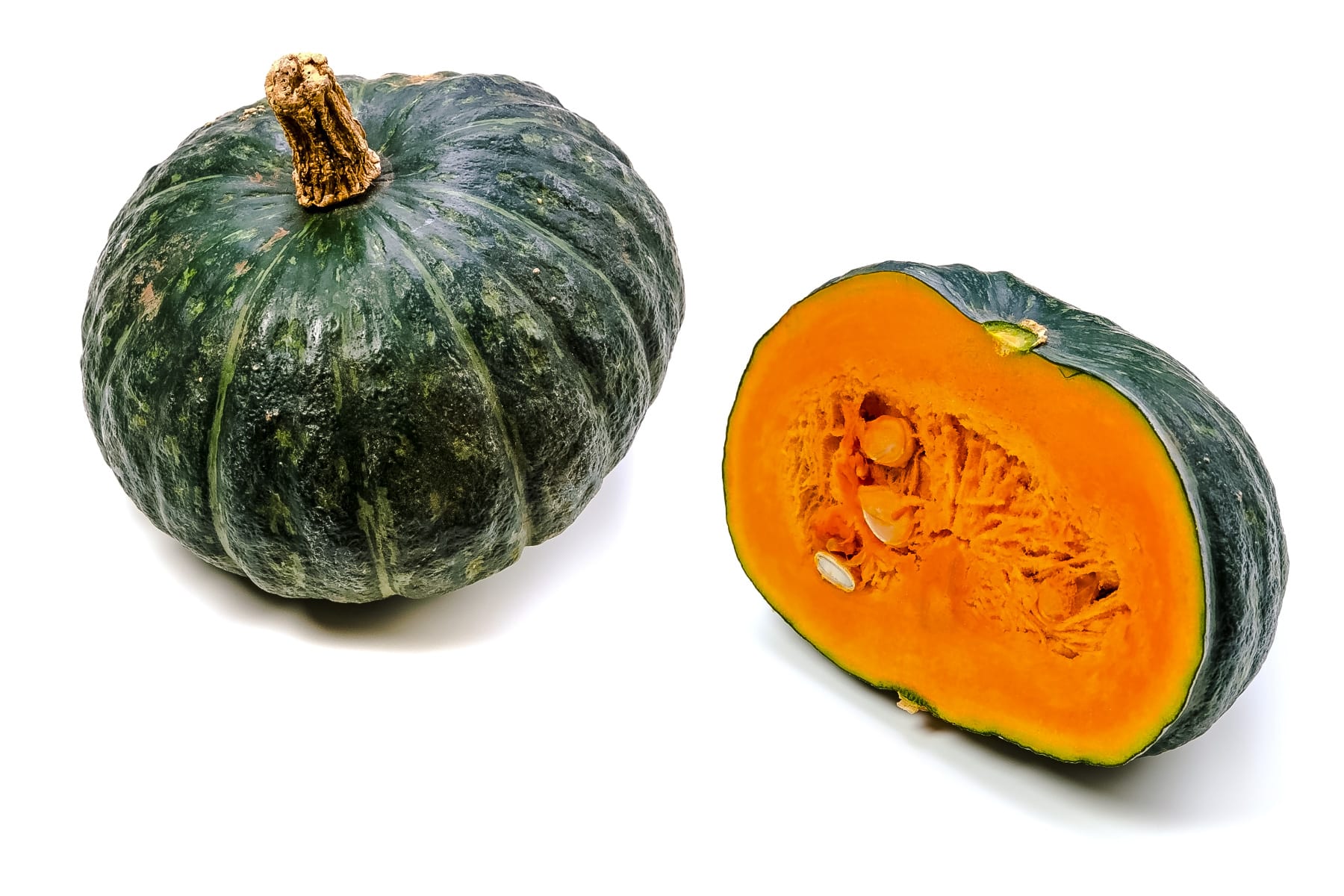
15. Kaho Watermelon
This personal-sized watermelon is oval in shape. It has light green-lime green skin with light orange flesh. Add this watermelon to your must-try list for extra vitamin C and vitamin A in your diet.
Interested in reading about green fruits? Check out this blog post, 112 Fruits That Are Green.
16. Kumquats
This citrus fruit looks like a smaller, oval version of an orange. Kumquats were first grown in China. Then they spread to Europe and the United States. They grow best in warm climates, though they are hardy enough for the cold.
Believe it or not, you can eat kumquat skin as well. There are few seeds, and they aren’t super juicy. Kumquats are an excellent source of vitamin C. In addition, they contain more fiber per serving than most other fruits.

17. Mamey Sapote
Known as Pouteria sapota, this tree species is native to Central America and Mexico. If you can find it, you’ll be in for a treat from this delicious orange-colored food. It is an excellent source of fiber, potassium, and vitamins C and B6. It is nutritious and can also support digestion, healthy skin, and heart health.
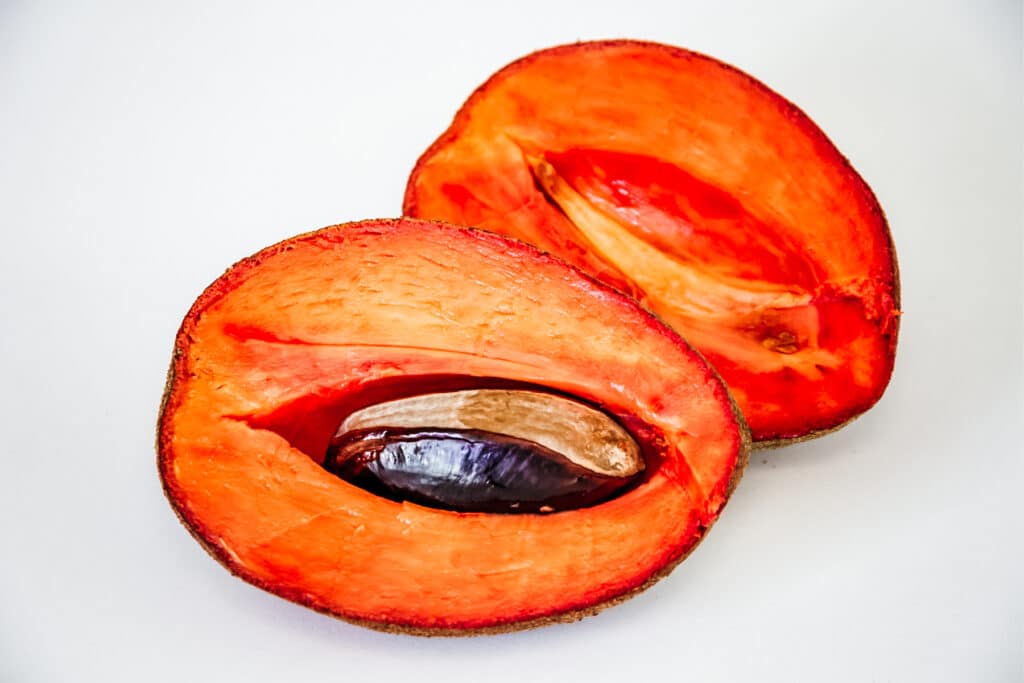
18. Mandarin
Mandarin orange is a distinctive species of orange. They tend to be sweeter and smaller in size than other oranges. You might guess that they are also rich in vitamin C.
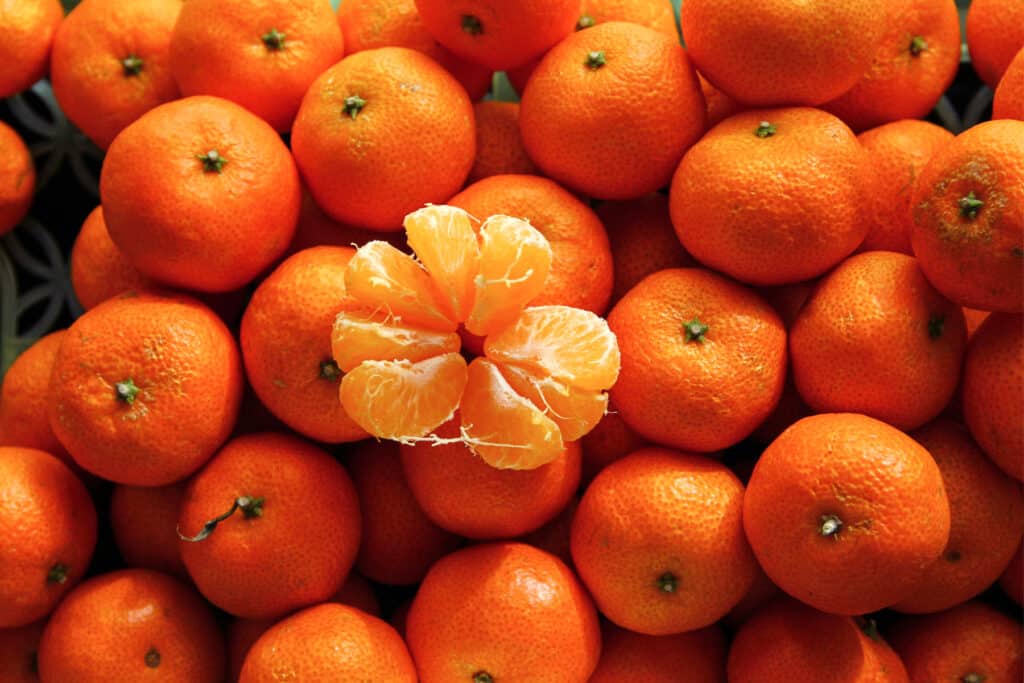
19. Ataulfo Mangoes
Sweet, tropical mangoes are one orange fruit you should never skip. There are hundreds of different types of mangoes, so take your pick.
Mangoes are so nutritious that they are revered for their help with improving digestion and immunity. They are an excellent source of vitamin C and a good source of fiber and vitamin B6. Some of the polyphenols these tasty orange fruits have may reduce cancer risk.
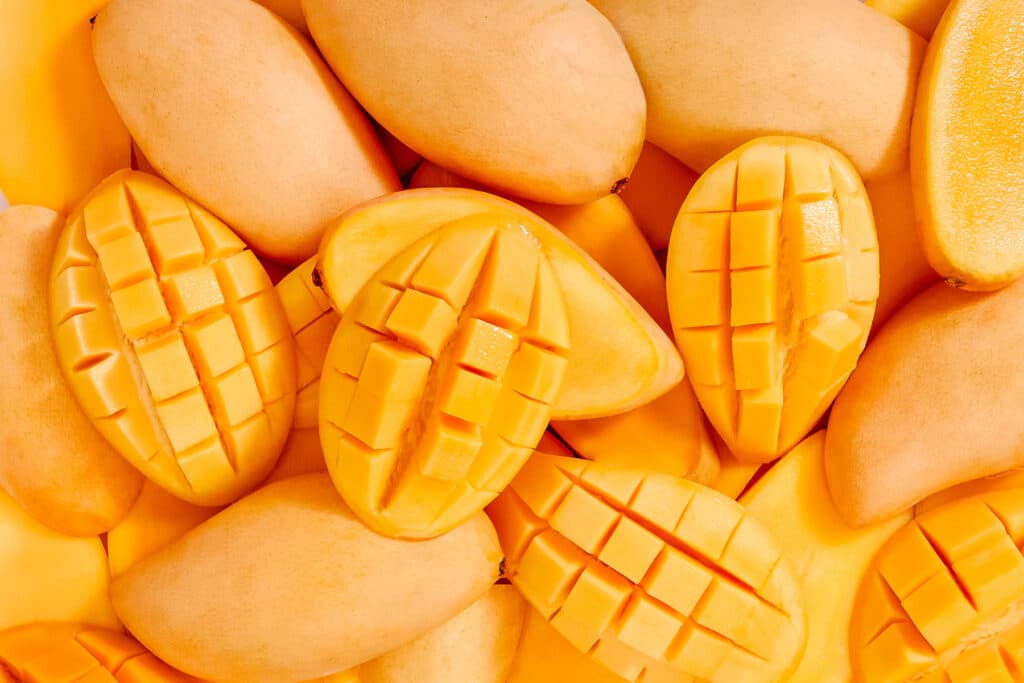
20. Maprang
Originally from Southeast Asia, maprang appear as small mangoes, though the taste isn’t the same. It’s different but no less delicious. Eat them fresh, and you’ll get a healthy dose of vitamin C.
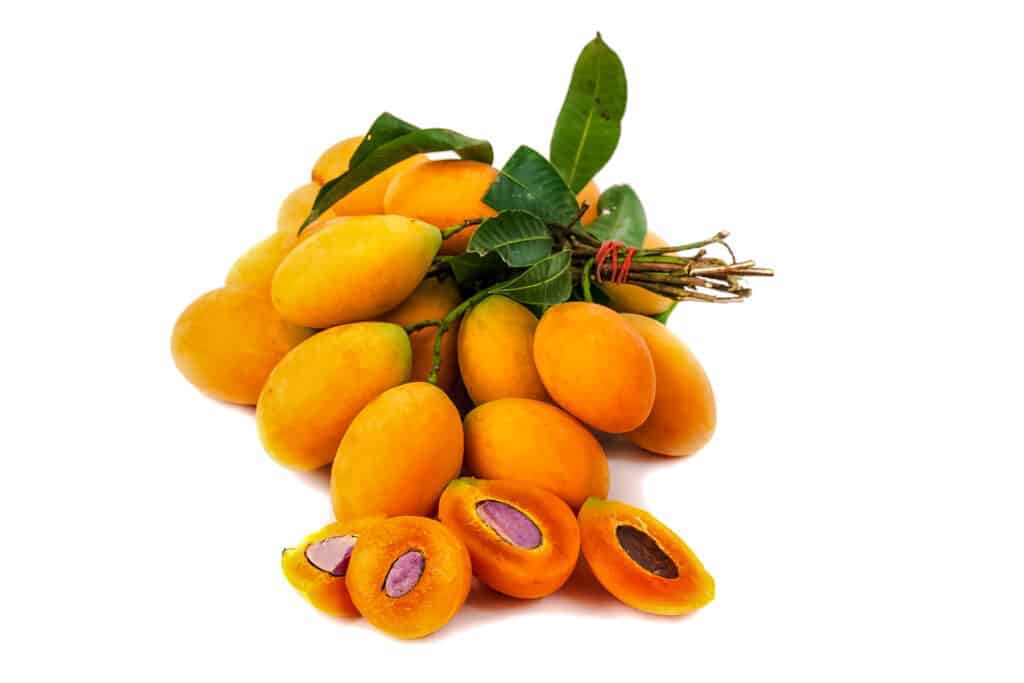
21. Mila Orange Pear Tomato
This orange tomato is pear-shaped and is tasty as can be! It is a smaller tomato that ripens earlier in the season. It is sweet with just the right amount of acidity kick.
22. Navel Orange
When it comes to orange-colored fruits, you have to think about the one that shares the name with the color. Oranges! There are so many different types of oranges with their own flavor profiles. Some are sweet. Some are sour, but all are good for you!
If you’re not a huge fan of peeling oranges, there’s good news…you can always enjoy a glass of all-natural orange juice! (Opt for 100% orange juice without additives when possible, and enjoy the pulp!)
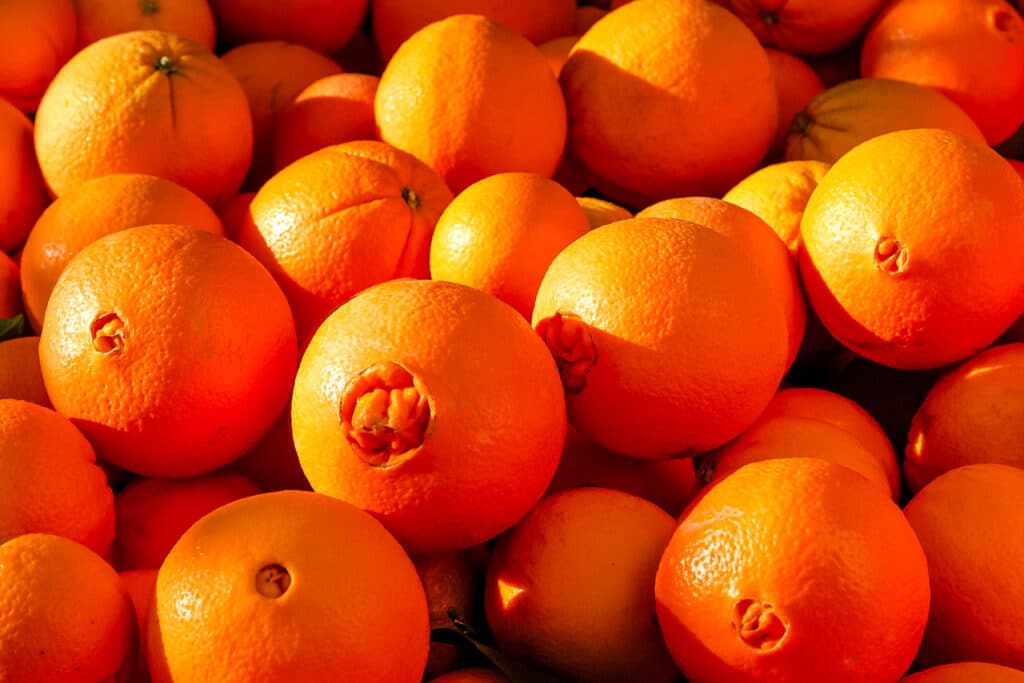
23. Orange Accordion Tomato
This orange tomato has a ruffled shape similar to an accordion. It is a huge tomato, easily weighing over a pound each or 450 grams! It’s perfect for sauces and salads alike. Could you eat a whole one in one sitting? I’m not sure I could!
24. Orange Bell Pepper
When you see bell peppers that aren’t green, they’ve gone on to ripen in different stages. That’s the case with the orange bell pepper. This orange vegetable gives you a sweet flavor when you eat it fresh.
And it also gives you heaps of vitamin C, a great boost for your immunity. (Did you know that bell peppers contain more vitamin C than many oranges?)
Chop bell peppers up and use them to dip into hummus for a wonderful and healthy snack!
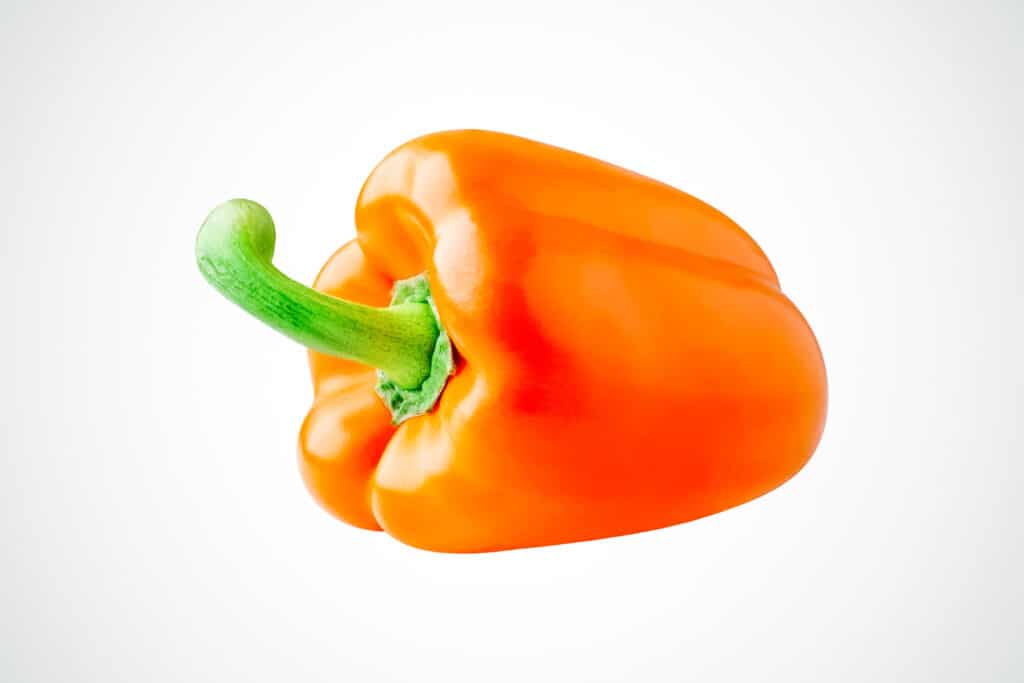
25. Orange Cherry Tomatoes
Cherry tomatoes aren’t usually seen as orange foods. But there are orange, yellow, and purple varieties too. Cherry tomatoes are an excellent source of vitamin A and a good source of vitamin C.
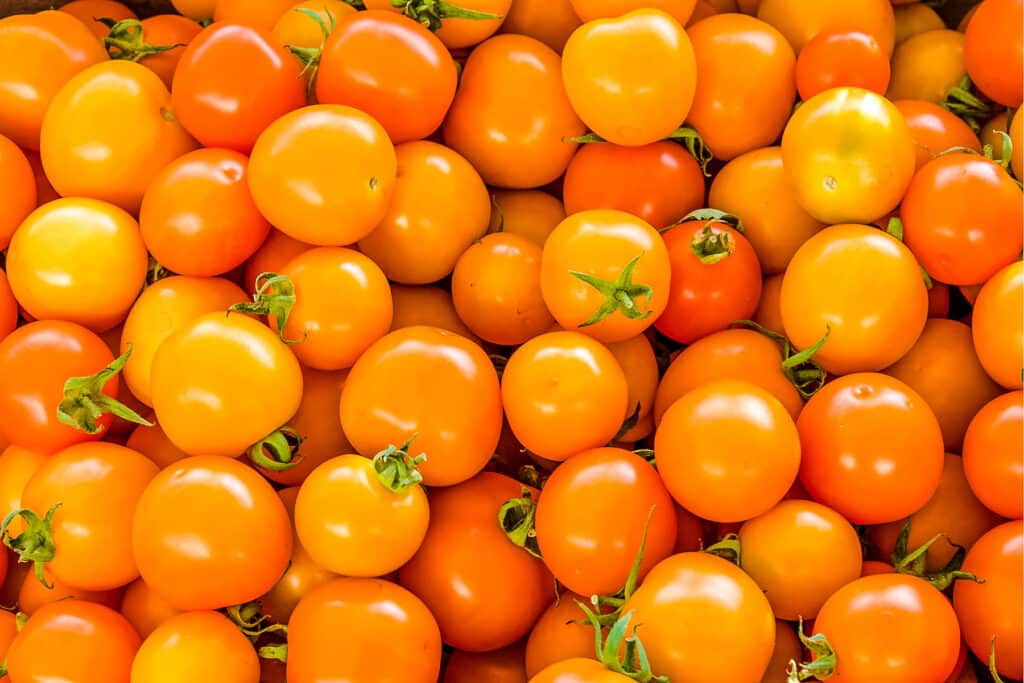
26. Orangeglo Watermelon
This watermelon is oval in shape and large in size. It has white to light green to dark green skin. Its flesh, on the other hand, is bright orange. Watermelon is an excellent source of vitamin C.
Do you want to learn about pink foods? Check out this blog post, 75 Foods That Are Pink.
27. Orange Habanero
Orange habanero peppers are among the most common colors, and let me tell you, they are hot! They range from 150,000 to 350,000 SHU on the Scoville scale. They’re hot yet a bit fruity. Originally, they were said to come from Mexico’s Yucatan Peninsula, but they’re cultivated in gardens all over the world now. If you can take the heat, you’ll find they may help you lower your cholesterol and high blood pressure, prevent cancer, and fight weight gain. Did you know that orange habaneros are high in vitamin C?
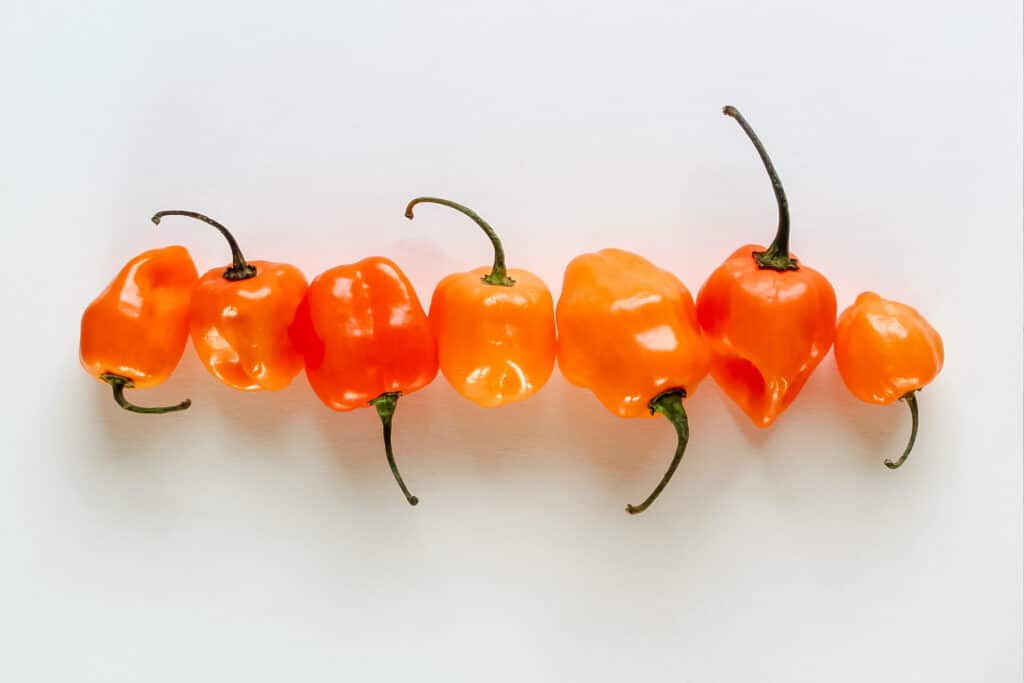
28. Tsurunoko Persimmon
This persimmon variety is slightly more oval and tapered than the more widely known rounder Fuyu variety. It has bold orange skin and can be eaten before it is fully ripe as well as when it’s fully ripe.
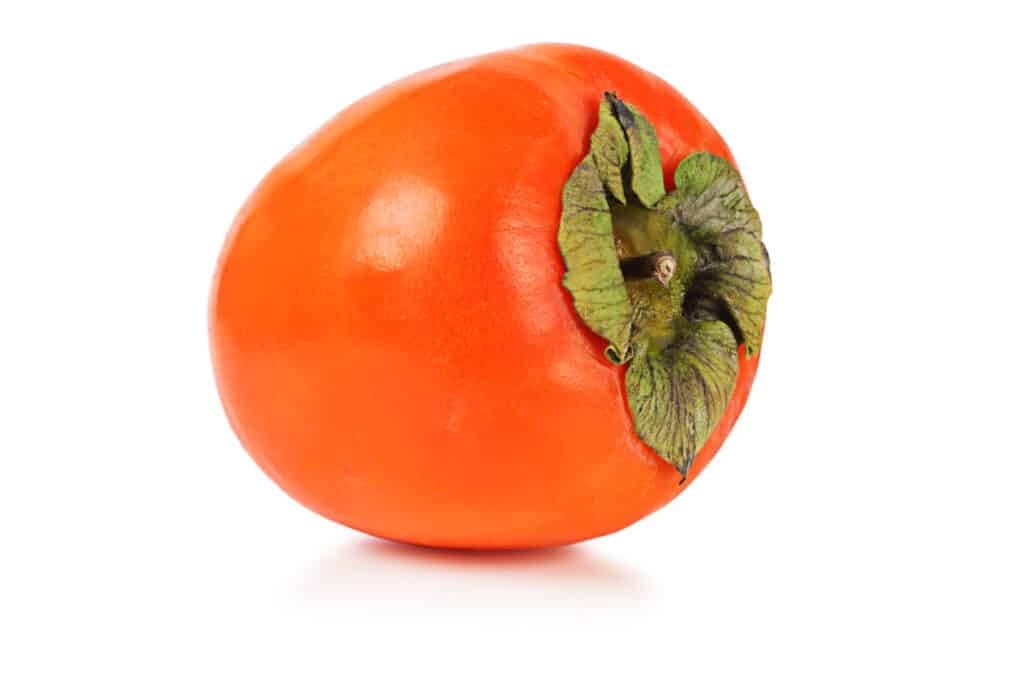
29. Hawaiian Sunrise Papaya
Sweet papaya was once seen as exotic. Today, this southern Hawaiian fruit is far more common year-round in supermarkets.
Papaya is an excellent source of vitamins C and A. It is also a good source of fiber, potassium, and vitamin B9. Papaya may be able to reduce your risk for heart disease, cancer, and diabetes. It’s also wonderful for digestion.
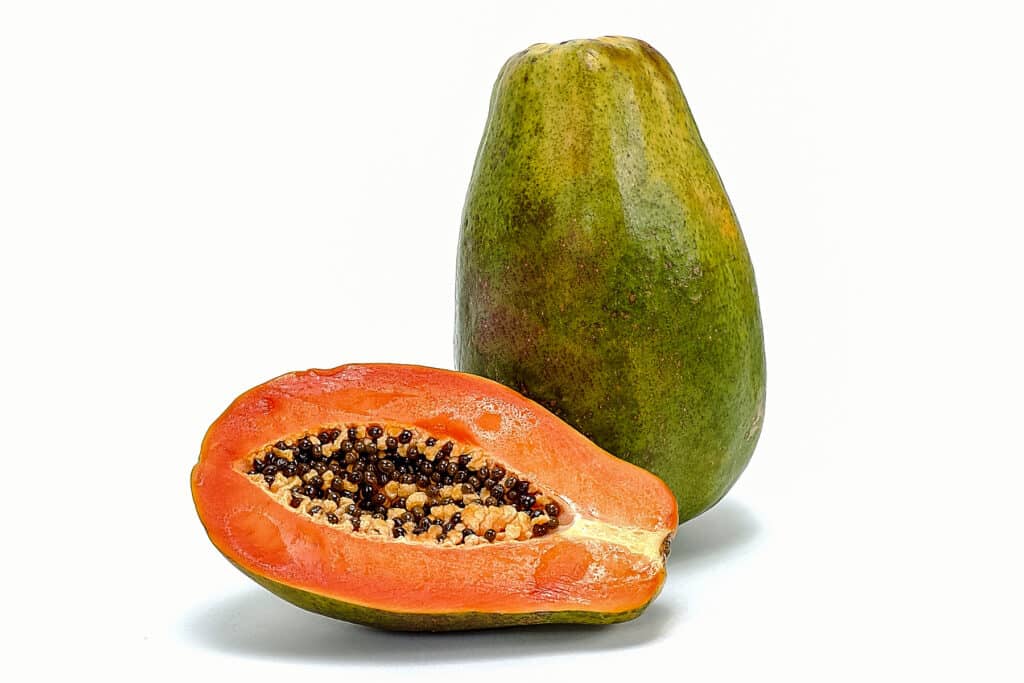
30. Peach
Peaches are a sweet fruit that makes for one of the most popular pies there is. But this orange-colored fruit is so nutritious and tasty on its own that you won’t miss the crust. There are clingstone and freestone types of peaches, which pertain to the stone in the center. Did you know that peaches are believed to have come about in China more than 8,000 years ago!?
Peaches are a good source of vitamin C (17% RDI) and vitamin A (10% RDI). They have been shown to improve your skin and possibly reverse damage from the sun. Peaches can also help keep your blood sugar balanced while treating you to something sweet.
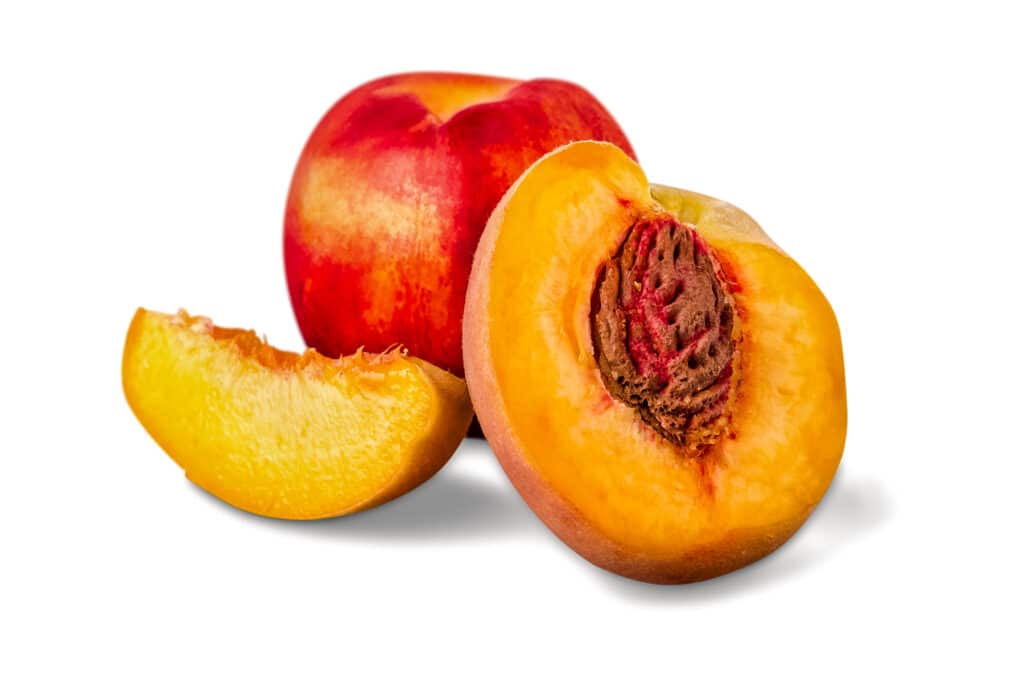
31. Fuyu Persimmon
These are sometimes called ‘Sharon fruit.’ Persimmons have a sweet flavor that makes them perfect for creating drinks and jellies. This Fuyu variety is nice and sweet. You can eat it even when it’s not quite ripe yet, and it will still taste amazing. Persimmons are an excellent source of vitamins A and C.
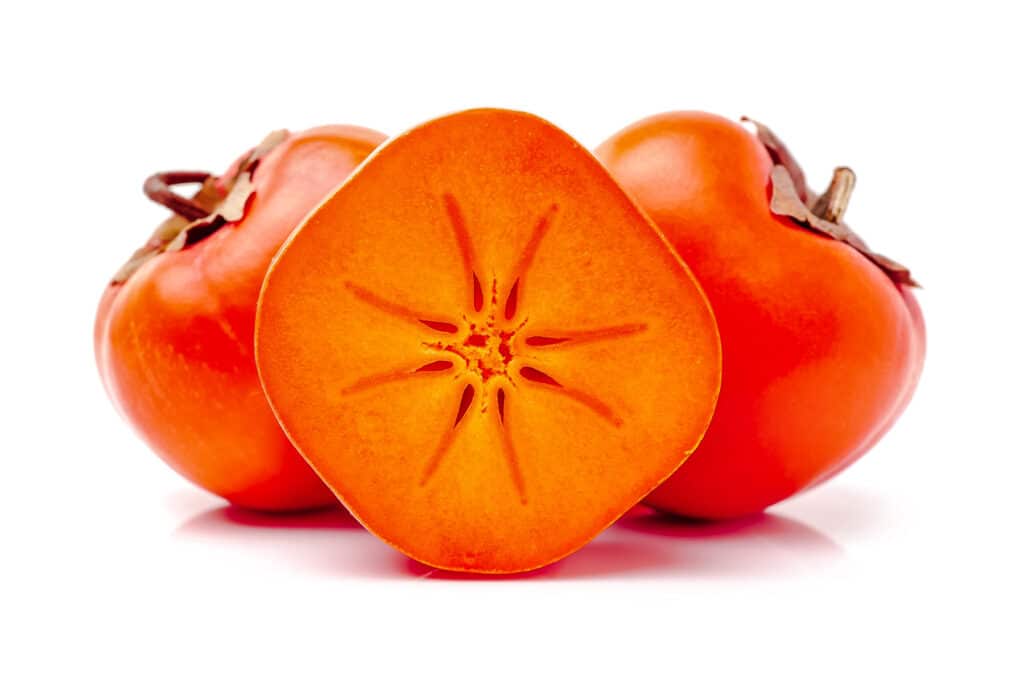
Interested in reading about black foods? Check out this blog post, 85 Foods That Are Black!
32. Sugar Pumpkin
Everyone’s favorite autumn food is fresh pumpkin, right? Talk about nostalgia. Those pumpkin spice-flavored things, though they aren’t healthy all the time, real pumpkin certainly is.
Pumpkin is an excellent source of vitamins A, K, and E. As for minerals, it is an excellent source of copper and is considered a good source of iron. This orange veggie can help boost immunity which is ideal heading into the colder weather.
Do you have a sweet tooth? How about these drool-worthy Vegan Pumpkin Scones or this vegan pumpkin pie?
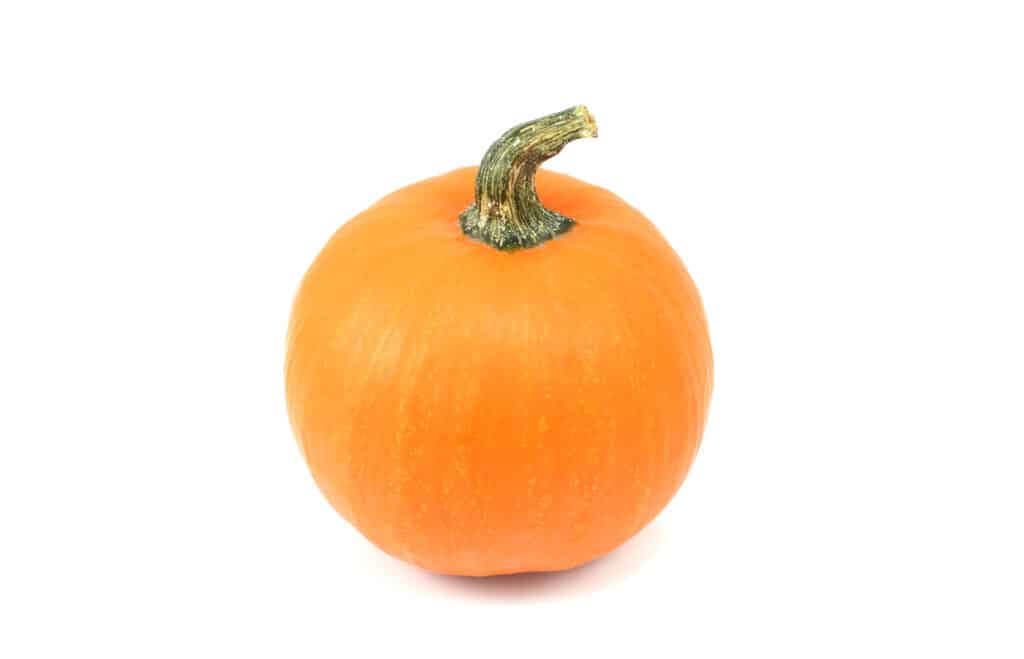
33. Salmonberry
Salmonberries are native to the west coast of North America from California all the way north through Alaska. Surprisingly they are actually part of the rose family.
They range in color from red, orange, and yellow and are a good source of vitamin C.
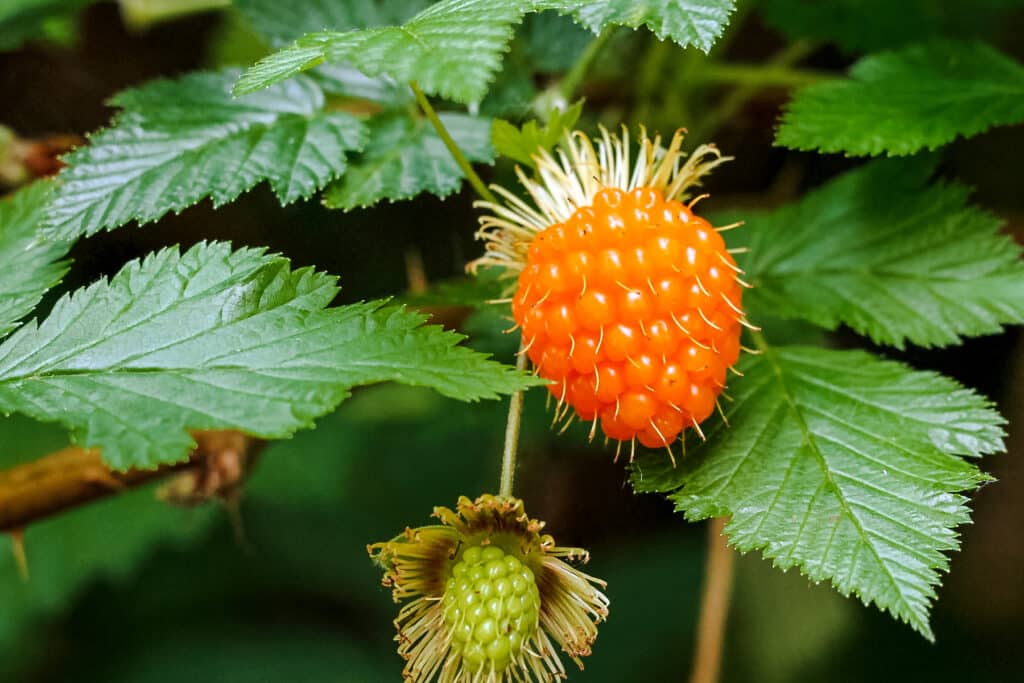
34. Sunrise Bumble Bee Tomato
These little tomatoes are super cute! These small tomatoes are oblong in shape. Their color is a beautiful galaxy of oranges and reds blending together.
35. Tamarillo
Don’t let the bitter skins of the tamarillo scare you away. This tree tomato is an egg-shaped fruit native to South America. Once you open up the tamarillo, you may experience a sweet, sour, or even salty flavor.
Many people love the tamarillo as this orange food provides plenty of vitamins and minerals. It is rich in vitamins C and A and is a good vitamin B6 and E source.
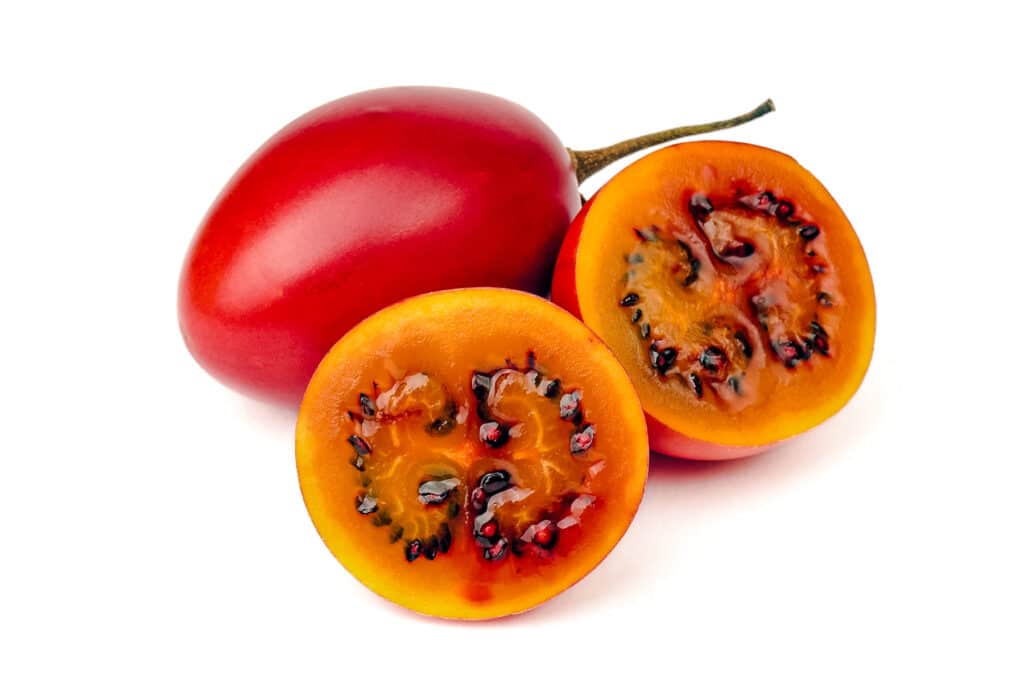
36. Tangelo
This orange citrus fruit is tasty but not always easy to find. It is a cross between a tangerine and a pomelo. Take it with you on your next outing as an easy snack and boost of vitamin C.
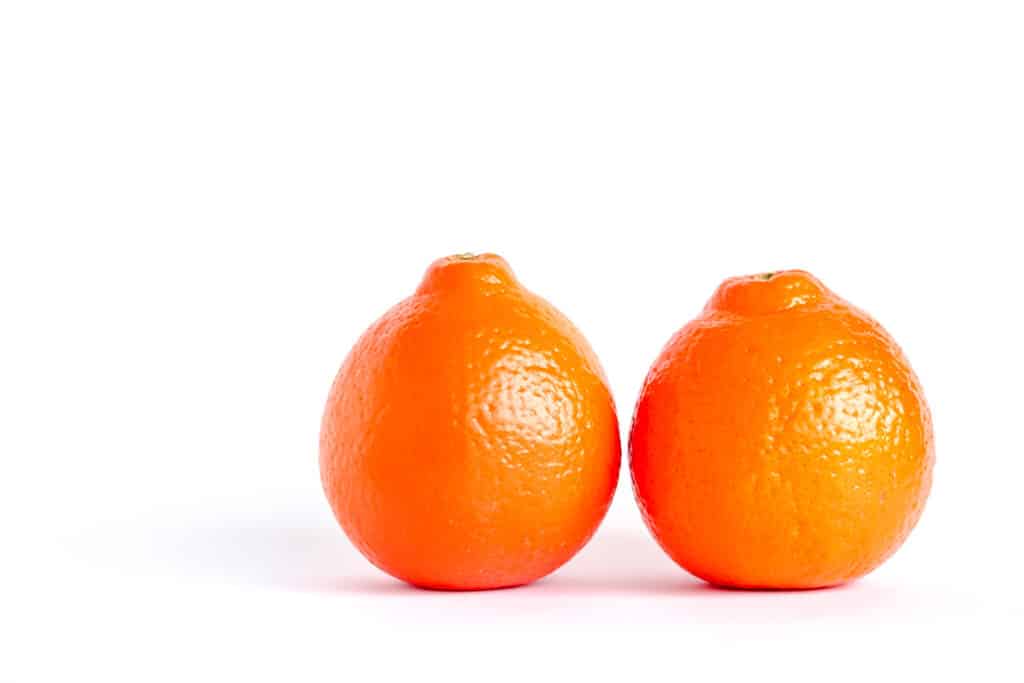
37. Tangerine
Tangerines are sweeter and less tart than other orange varieties. It’s an excellent source of vitamin C and a good source of vitamin A.
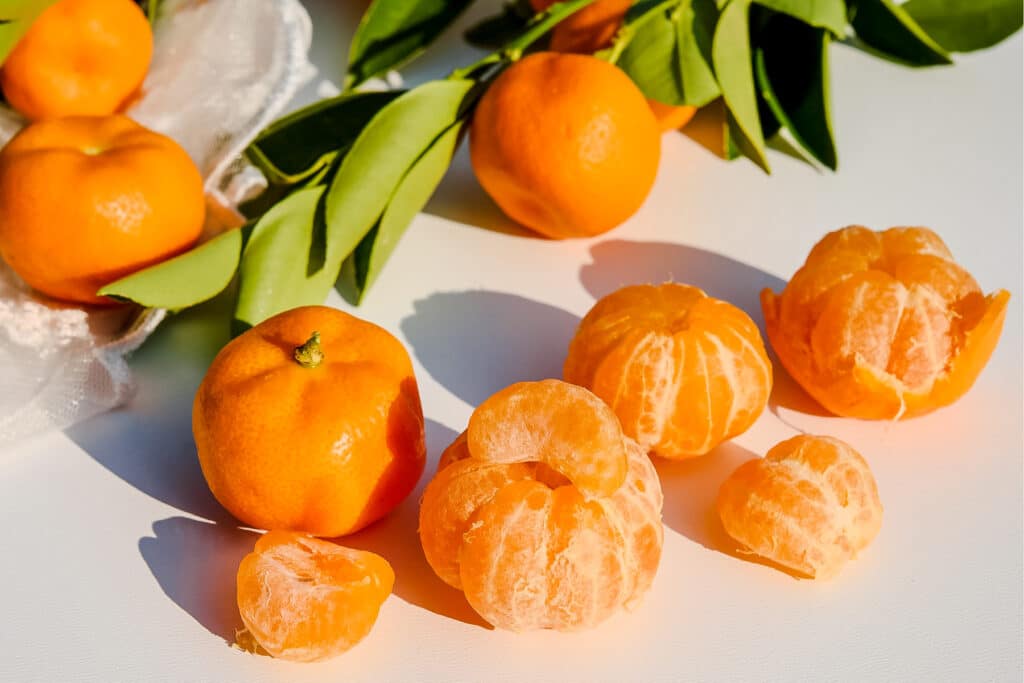
38. Valencia Orange
Did you know that Valencia Oranges are the only oranges that are ripe during summer? It is also higher in vitamin C than many orange varieties as well.
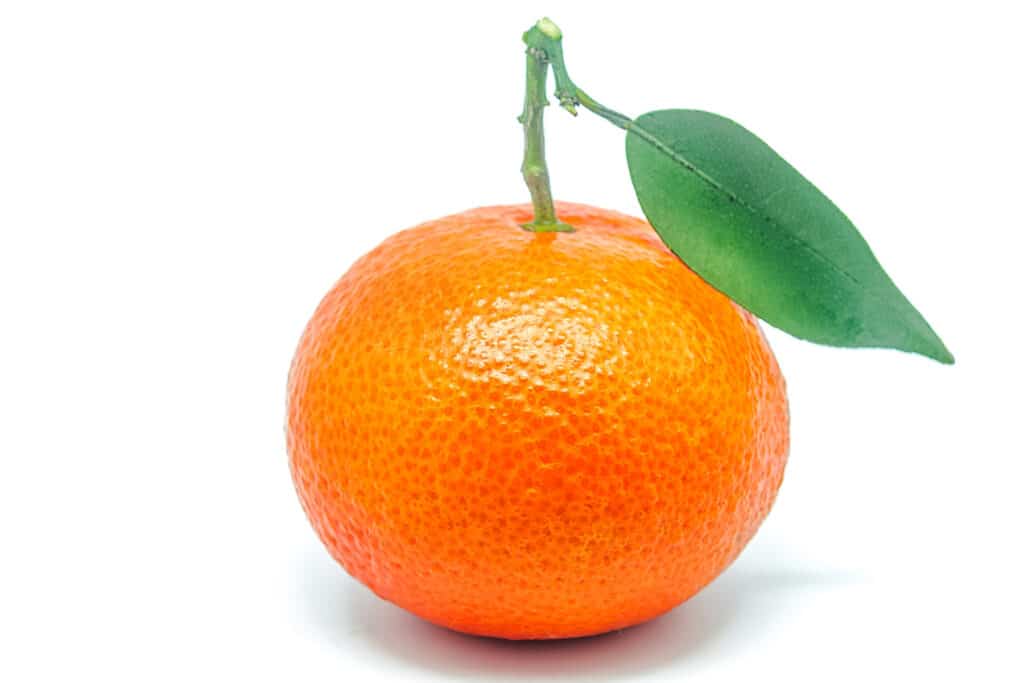
What legumes are orange?
Yes, there’s an orange-colored legume. It’s red lentils! Despite the name, they are orange in color.
39. Red Lentils
Red lentils are wonderfully nutritious and have plenty of flavor. They originated in southwest Asia over 9,000 years ago.
One serving of red lentils provides 12 grams of protein, 33 grams of carbohydrates, and 7 grams of fiber. They are a good source of iron, potassium, and vitamin B9.
This heart-healthy orange color food is known to reduce the risk of heart disease. It can also help red blood cells oxygenate correctly and improve circulation.
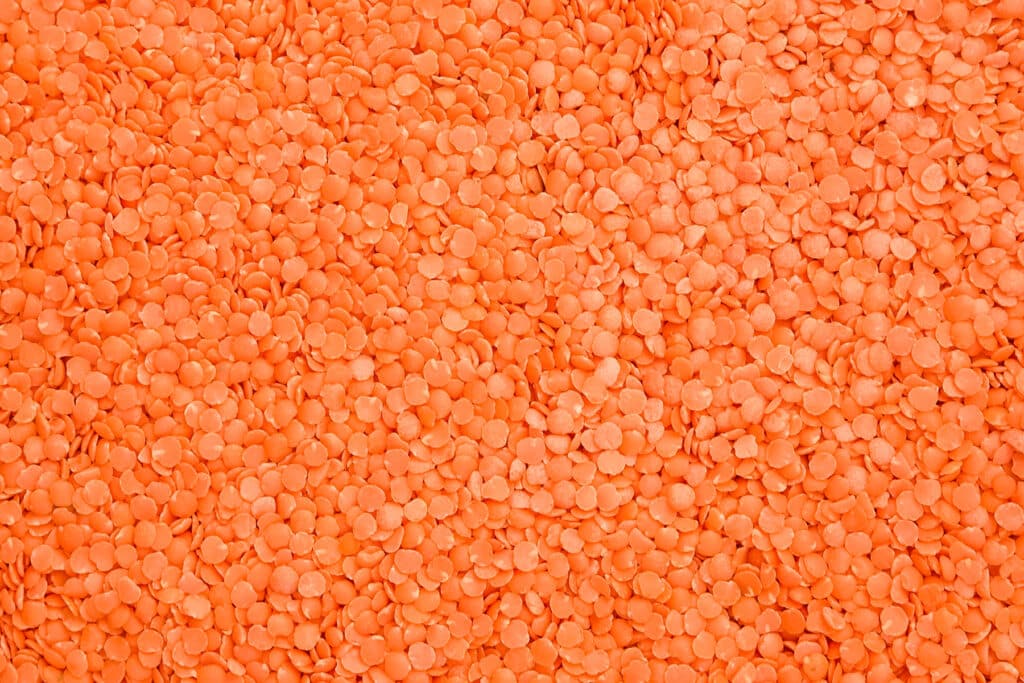
If you decide to try making red lentils, I have some recipes for you. If you want to cook them plain to add to a salad, then you can follow this recipe, How To Cook Red Lentils. It has step-by-step videos to make your life easier. One of my favorite recipes is this Lentil Dal.
What edible orange flowers are there?
No, you don’t have to be a bunny or a deer to like eating flowers. There are orange colored foods in the edible flower sector. These are great for teas or even eating with your meals.
A great way to incorporate edible orange flowers into your diet is by using them as a garnish. They can add not only beauty but additional flavors and texture to your favorite salad, soup, meal, or even a charcuterie board.
Interested in planting edible flowers in your garden or a flower pot? Here is a great variety of edible flower seeds to get you started.
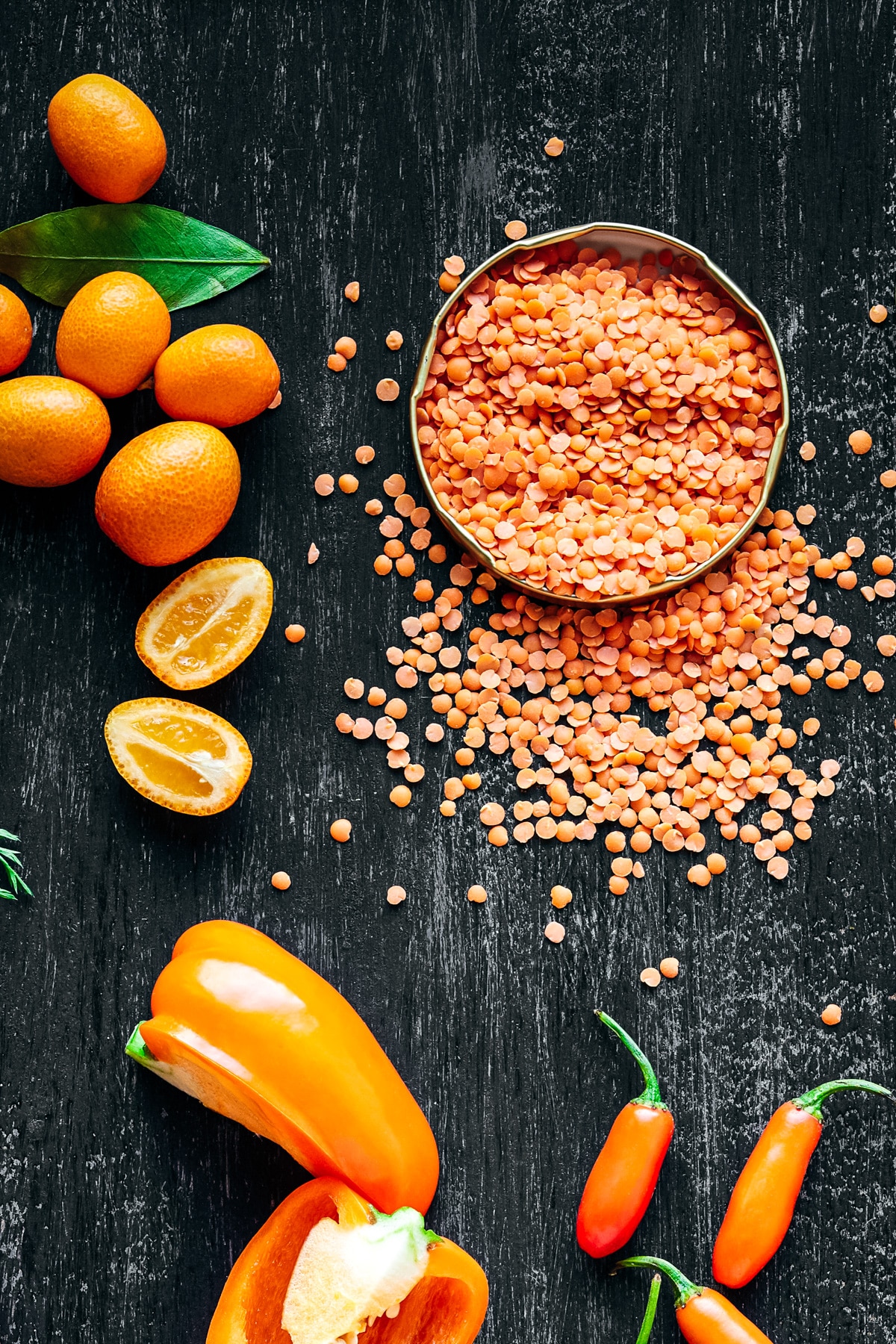
40. Calendula
Calendula plants have bright orange-yellow flowers. These flowers have been used for centuries in traditional medicinal treatments. Mostly, it’s been external, but the flowers are indeed edible. They make an affordable alternative to imparting that gorgeous saffron hue to your meals, plus they have beta carotene and micro-nutrients that are said to have anti-inflammatory effects.

41. Chrysanthemum
Also known as mums, these flowering plants are in the Asteraceae family. Traditional medicine practices have used them for everything from high blood pressure to chest pain and more. These flowers can help circulation and may help with insulin sensitivity. They are often made into a tea for anti-inflammatory benefits. However, this can be dangerous for those with allergies to ragweed or daisies. If you have this allergy, please do not consume chrysanthemums.
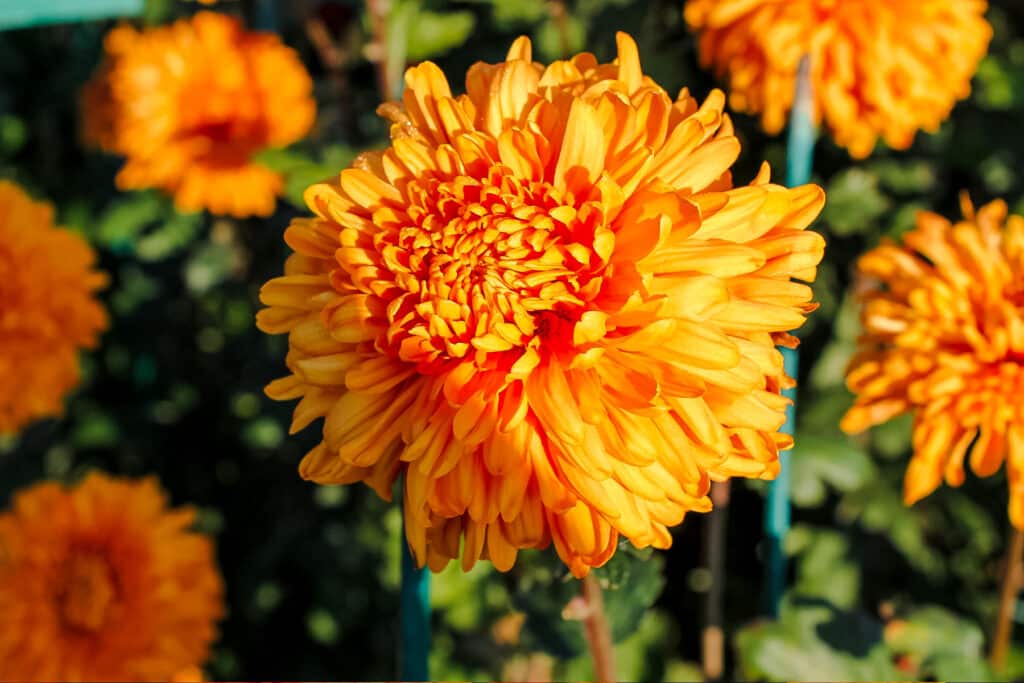
42. Marigold
This beautiful flower is part of the sunflower family. It can help skin heal and has natural anti-inflammatory and antiseptic properties. When you ingest marigolds, they can help your immune system when you’re ill by lowering fever and reducing inflammation in the mouth and throat. These flowers may also help cleanse the liver, reduce inflammation in the digestive system, and relieve PMS.
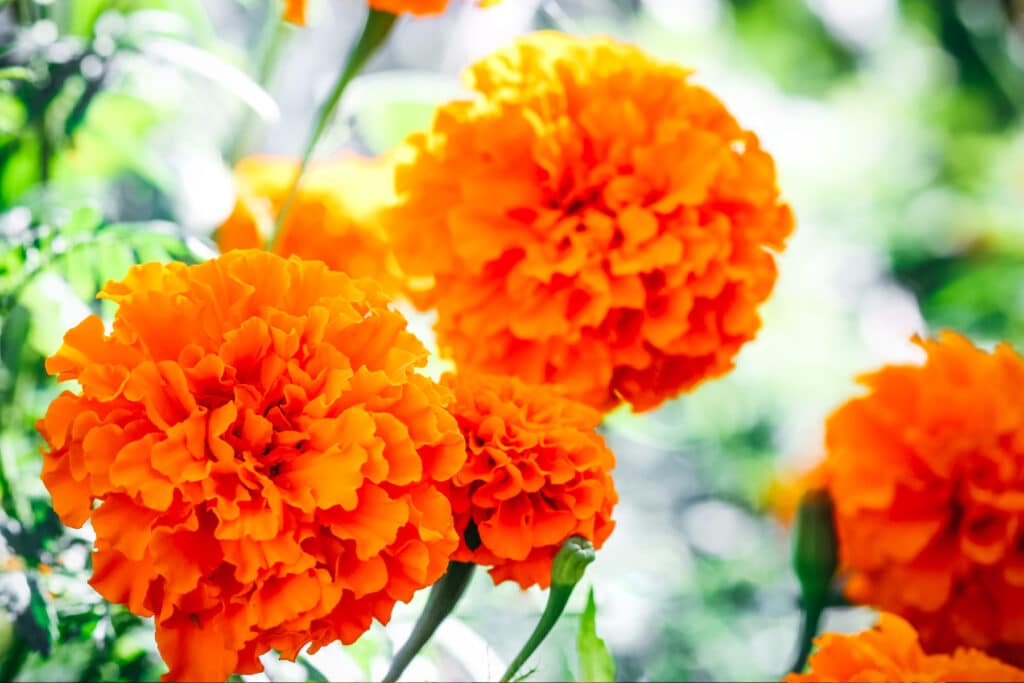
43. Nasturtium
Nasturtiums were originally from Central and South America, though now they can be found in gardens everywhere. The entire plant is edible, but the orange flowers are just so beautiful (and tasty!) when added to salads. They have the same amount of vitamin C as parsley, so eat them up!
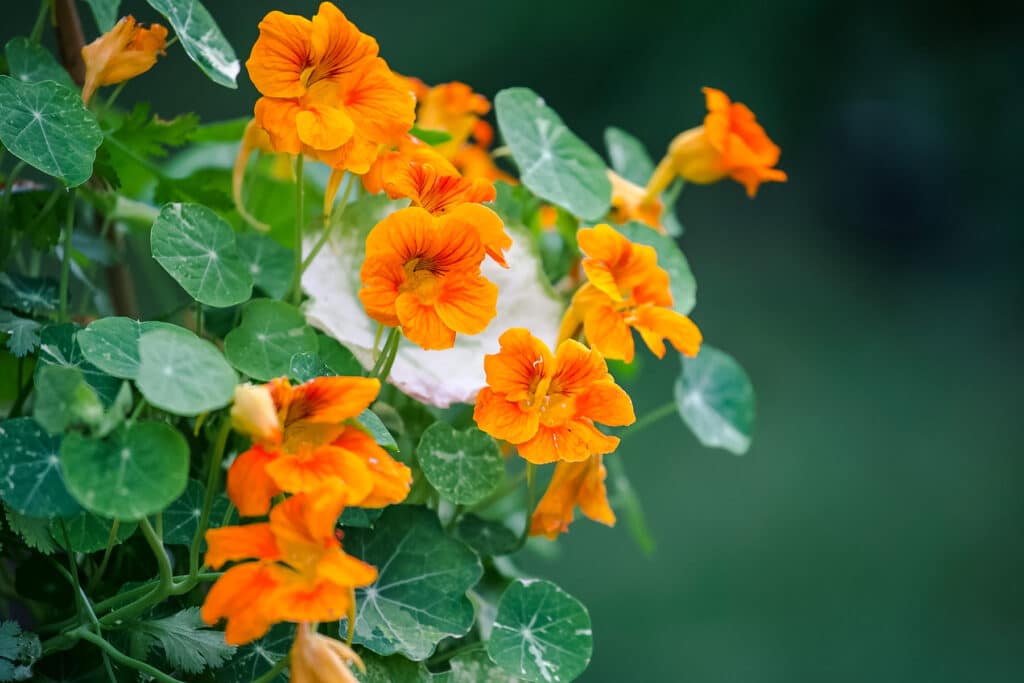
Interested in reading about yellow foods? Check out this blog post, 100 Foods That Are Yellow!
44. Squash Blossoms
Hailing from summer or winter squashes, these are edible flowers that come from the squash plants (obviously). They’re orange and yellow, and despite how delicate they look, they have tons of fiber. Squash blossoms contain iron as well as vitamins A and C.
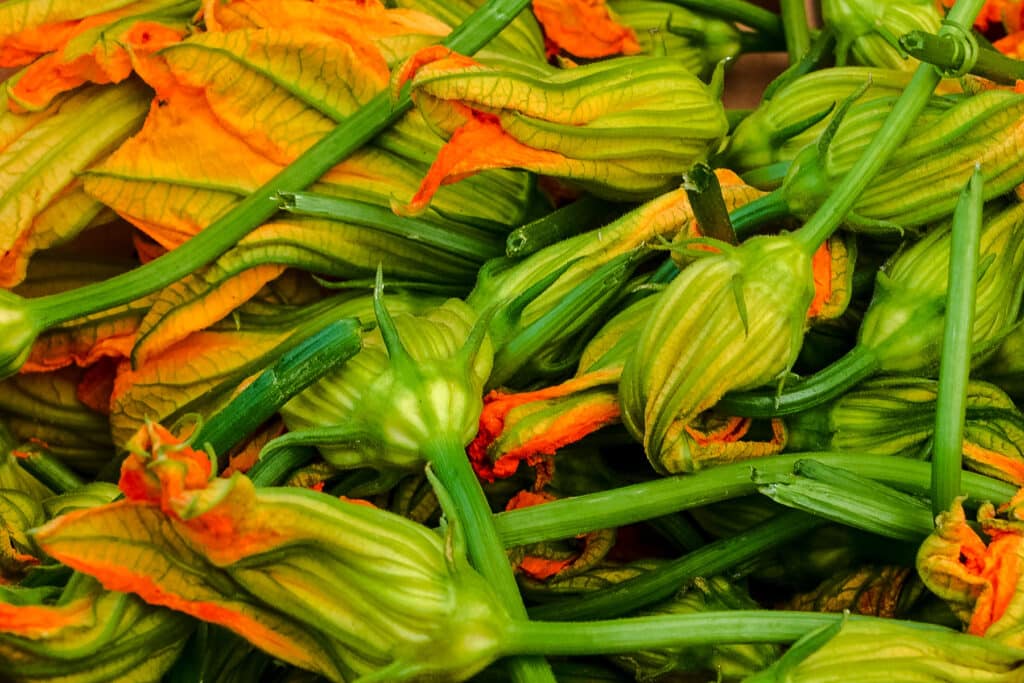
45. Scarlet Runner Bean Flowers
These flowers grow on what is also known as the Oregon lima bean. It’s an heirloom variety with brilliant blossoms that attract bees and hummingbirds alike. When you use these flowers, they impart an earthy flavor and add additional nutrients to classic dishes.
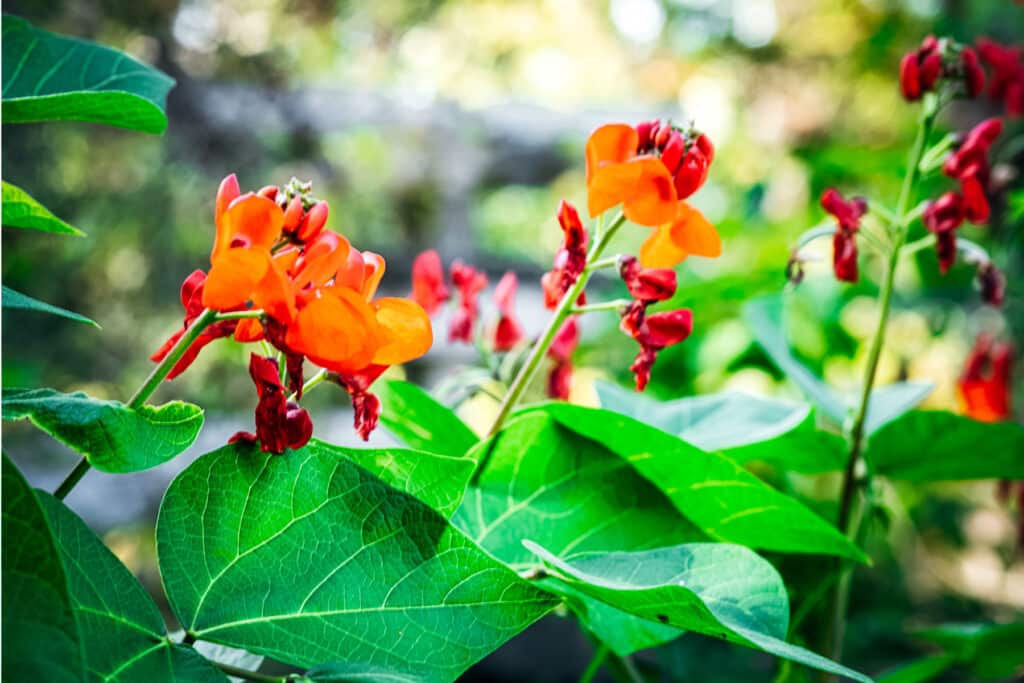
Orange Grains To Add To Your Plate
50. Atomic Orange Corn
This corn is not your traditional grocery store yellow corn. This vibrant orange corn is high in beta-carotene as well as protein.
Fungus That Are Orange
51. Chanterelle Mushroom
This edible mushroom can range in color from orange to yellow or almost white. They are rich in copper. Chanterelles are also a good source of pantothenic acid, niacin, iron, and vitamin D. They can be consumed raw; however, sautéeing them with a bit of avocado oil and garlic.
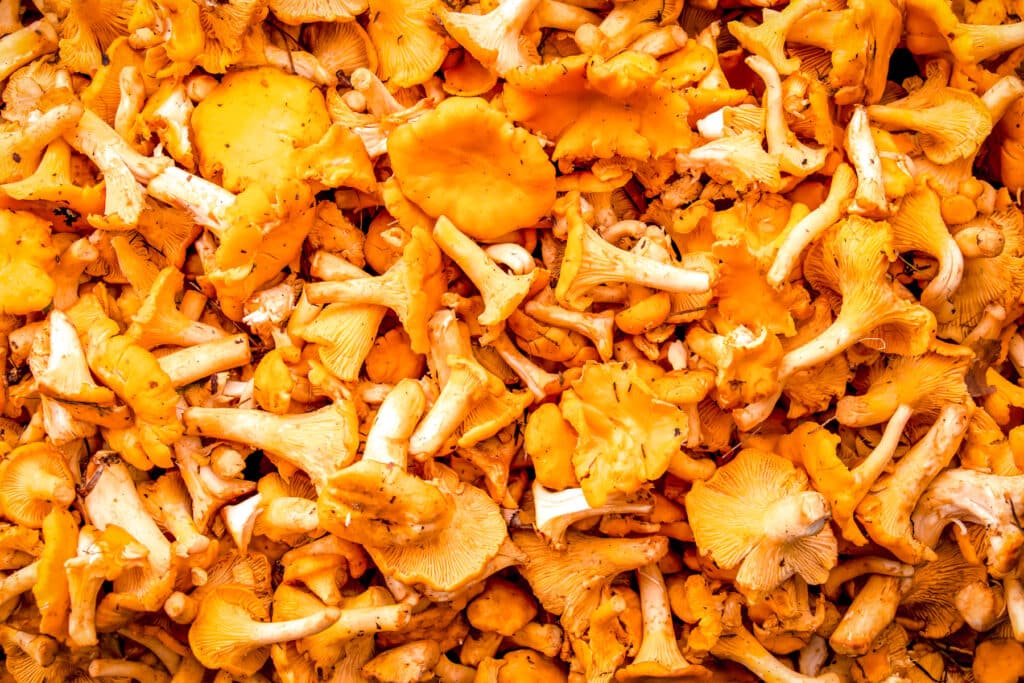
52. Chicken Of The Woods
This large mushroom ranges in color from a warm yellow to vibrant orange. Some people think that it tastes like chicken, hence the name. 100g of this mushroom packs 21g of protein. It is also a good source of potassium and vitamin C.
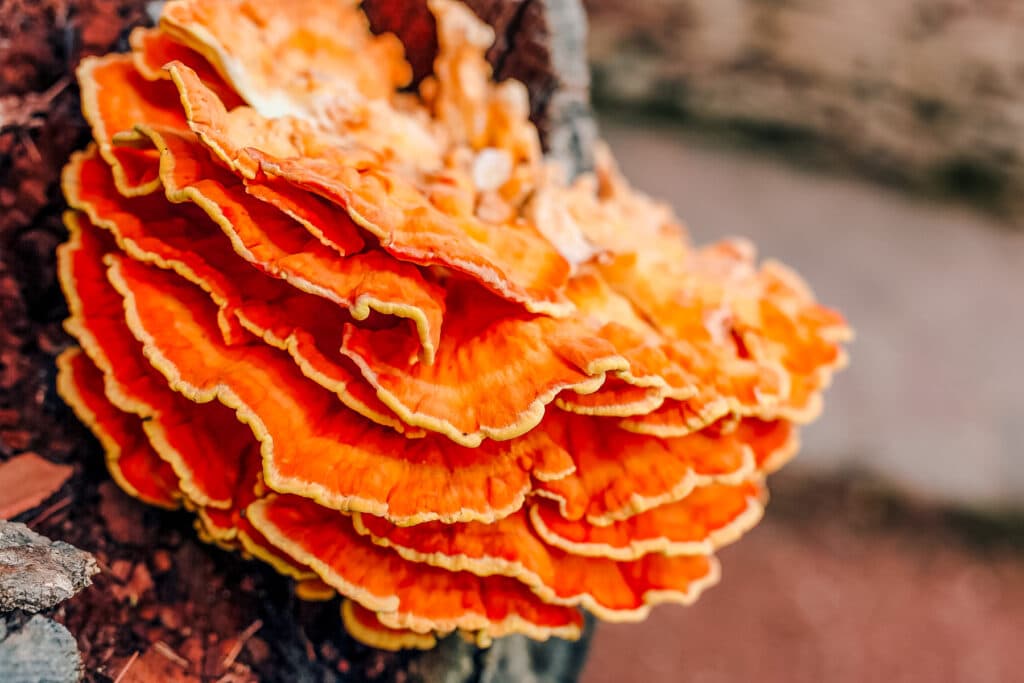
Hungry for some orange foods and snacks?
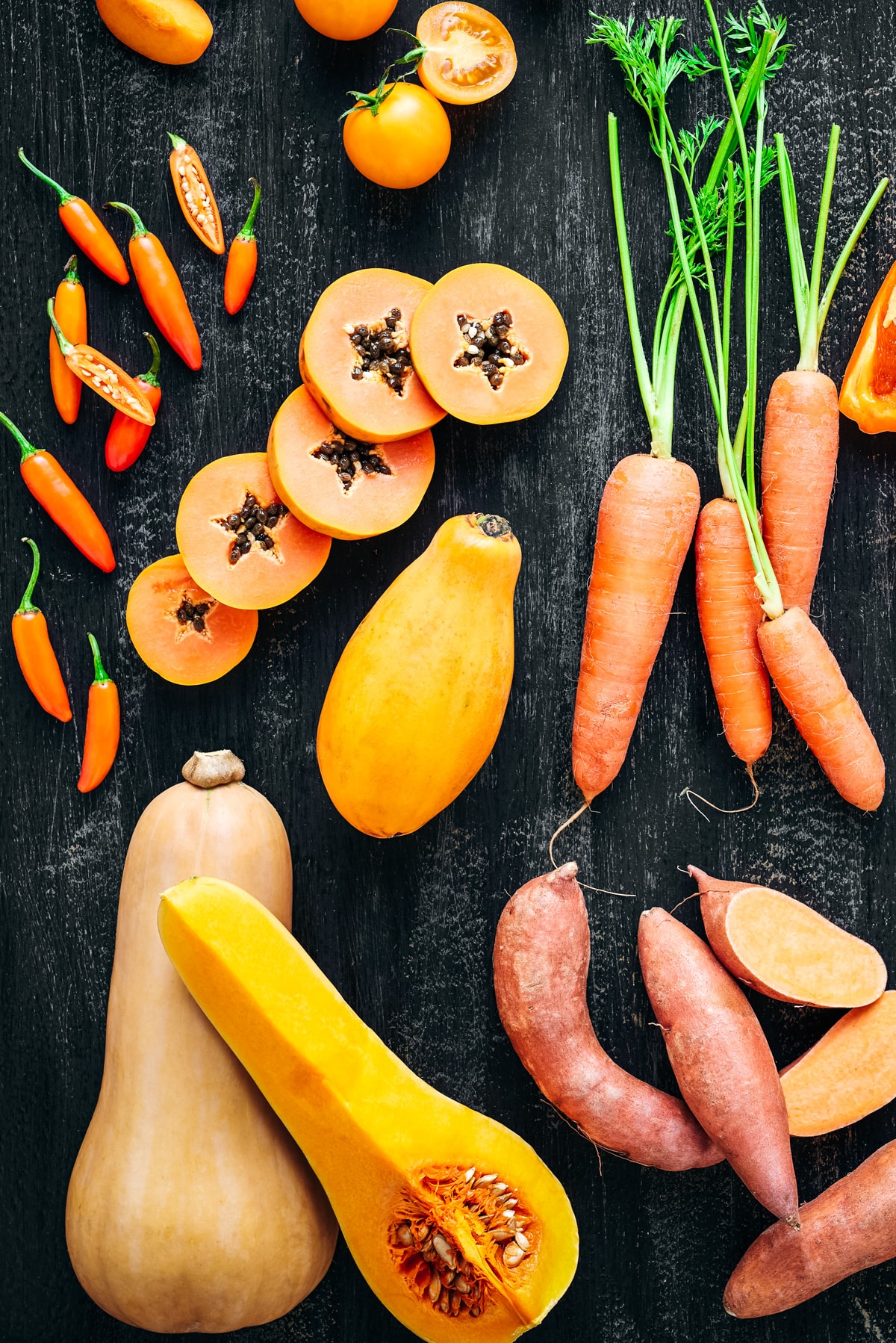
FAQ
Yes! Cauliflower is a cruciferous vegetable, and a variety is orange.
There are many foods that are yellow-orange in color. These include but are not limited to cantaloupe, acorn squash, apricots, and various peppers.
Can you think of others? Let me know in the comments!
A blood orange can be referred to as a purple orange. They are orange in color on the outside but have deep red-purple flesh.
Excluding processed foods that appear orange, thanks to food coloring and other artificial ingredients, there are a variety of at least 31 orange foods that you could include in your diet. These orange foods and snacks consist of veggies, fruits, legumes, and even edible orange flowers.
A Final Word About Foods That Are Orange
Orange foods tend to contain beta-carotene and xanthophylls. Both of these phytonutrients are necessary for your body. If you are interested in helping your immune system work as efficiently as possible, especially these days, you can’t go wrong with eating more colorful foods, including orange-colored food.
There are orange-colored fruits, orange vegetables, orange legumes, and edible orange flowers that you can use to create some amazing dishes in your kitchen. Focusing on these fresh and nutritious bright color foods will help you make the rainbow of nutrition your body naturally craves.
Do you love making smoothies? Check out this blog post, 30 Best Vegetables For Smoothies.
Roast some carrots tonight and serve them alongside a curry with red lentils. Finish it all off with sweet oranges or your favorite citrus fruits. When you add foods that have vivid color to your table, you’ll find the best of both worlds in nutrition and taste!
If you’re interested in learning about yellow foods, including fresh corn, acorn squash, yellow bell peppers, yellow fruits, etc., this blog post, Foods that are Yellow, is for you! On the other hand, if you want to read more about blue foods, grapes, plums, carrots, kale, and so much more, check out this blog post: Foods that are Blue.
This post may contain affiliate links, meaning I’ll receive a commission if you purchase through those links at no extra cost to you. Please read our full disclosure for more information. Thank you for supporting Raepublic.

Thank this article was very helpful. We are doing a Fall Fiesta at work this week and our Color are orange.
I’m happy that you found it helpful. So fun to have a Fall Fiesta too!
Loving this new series! Keep it up!
Thanks so much Amber!